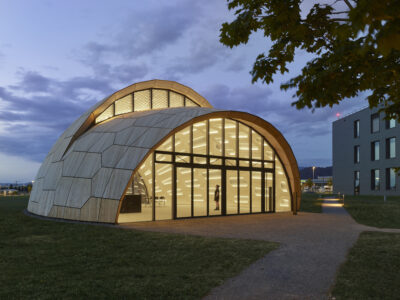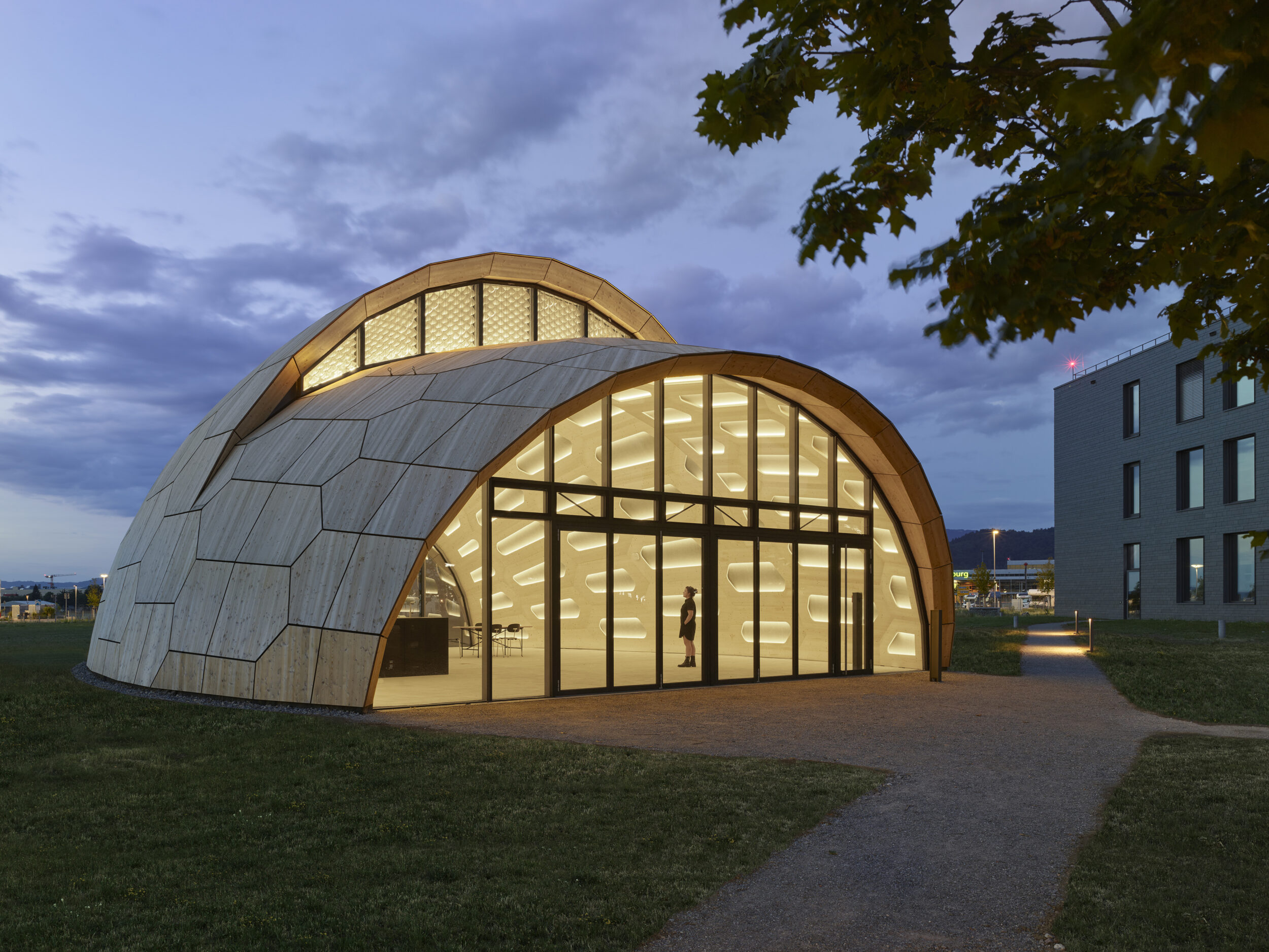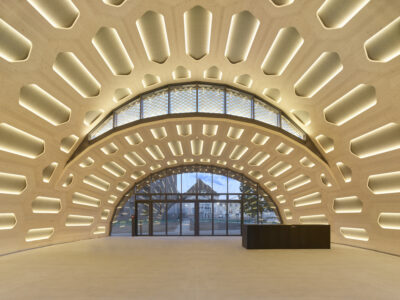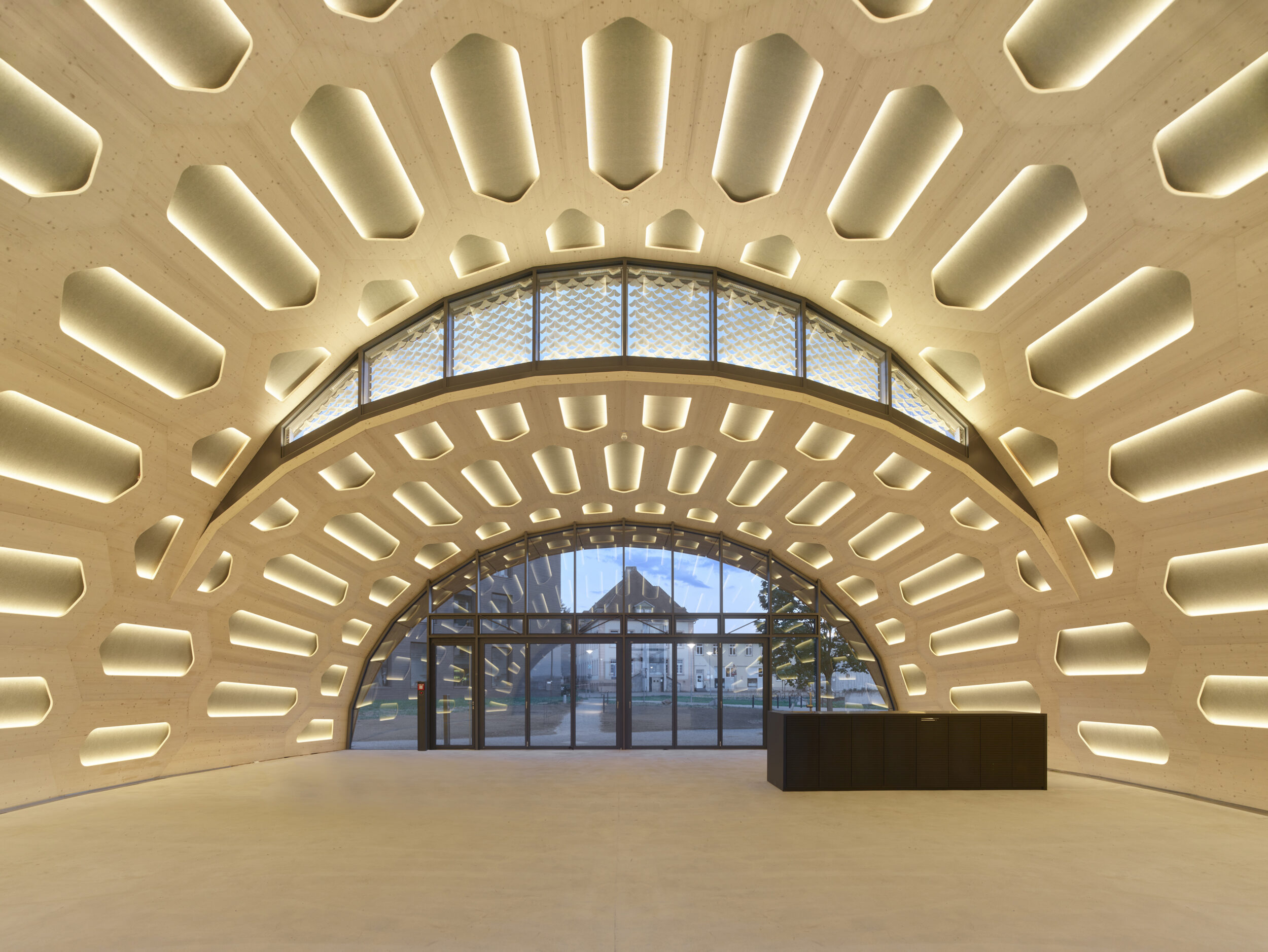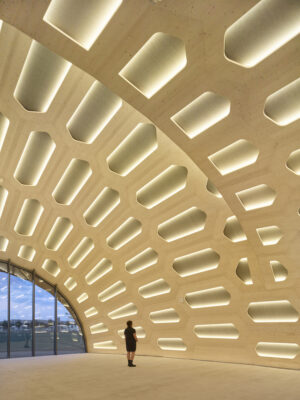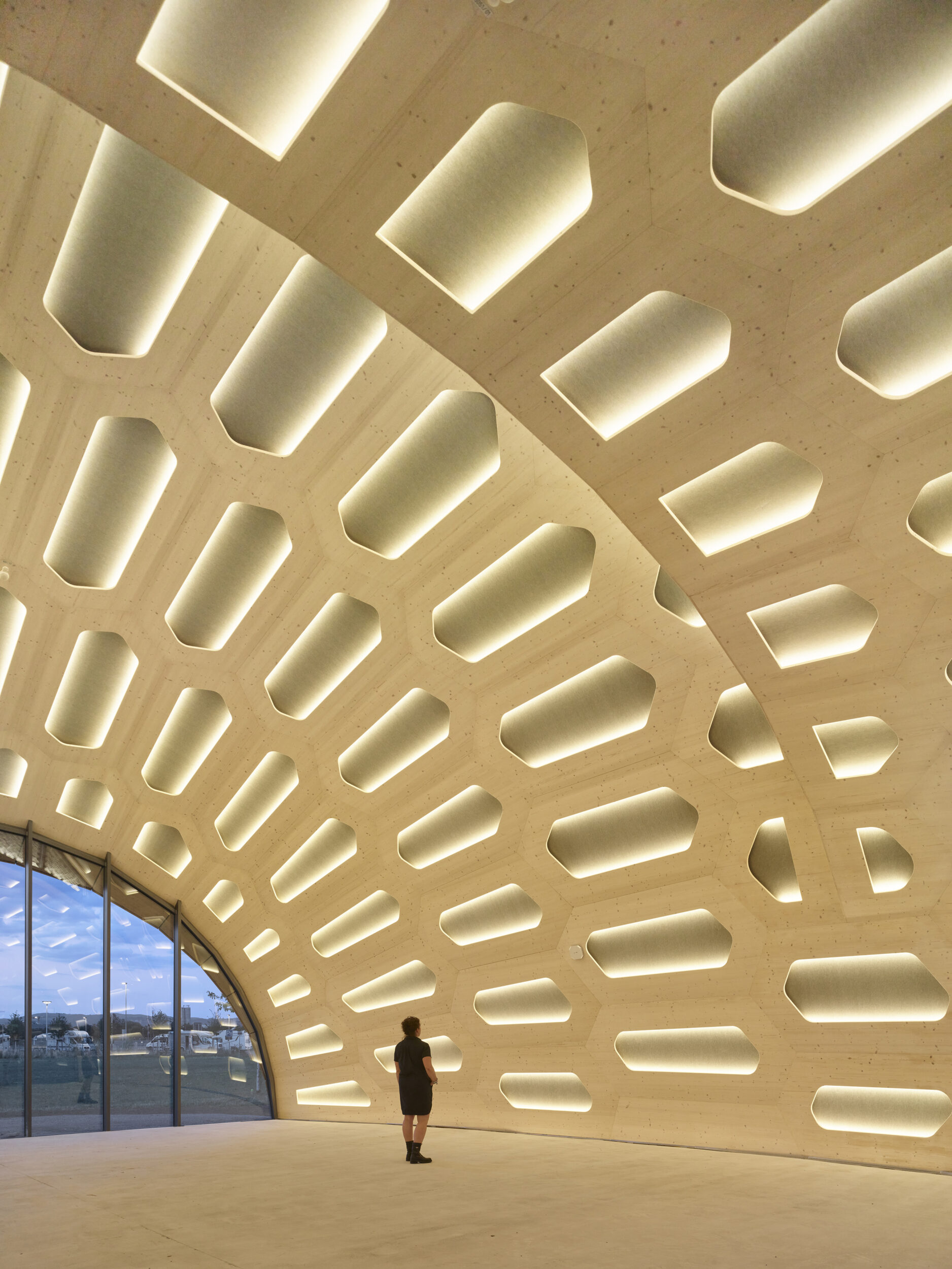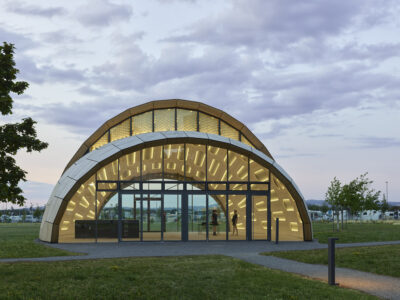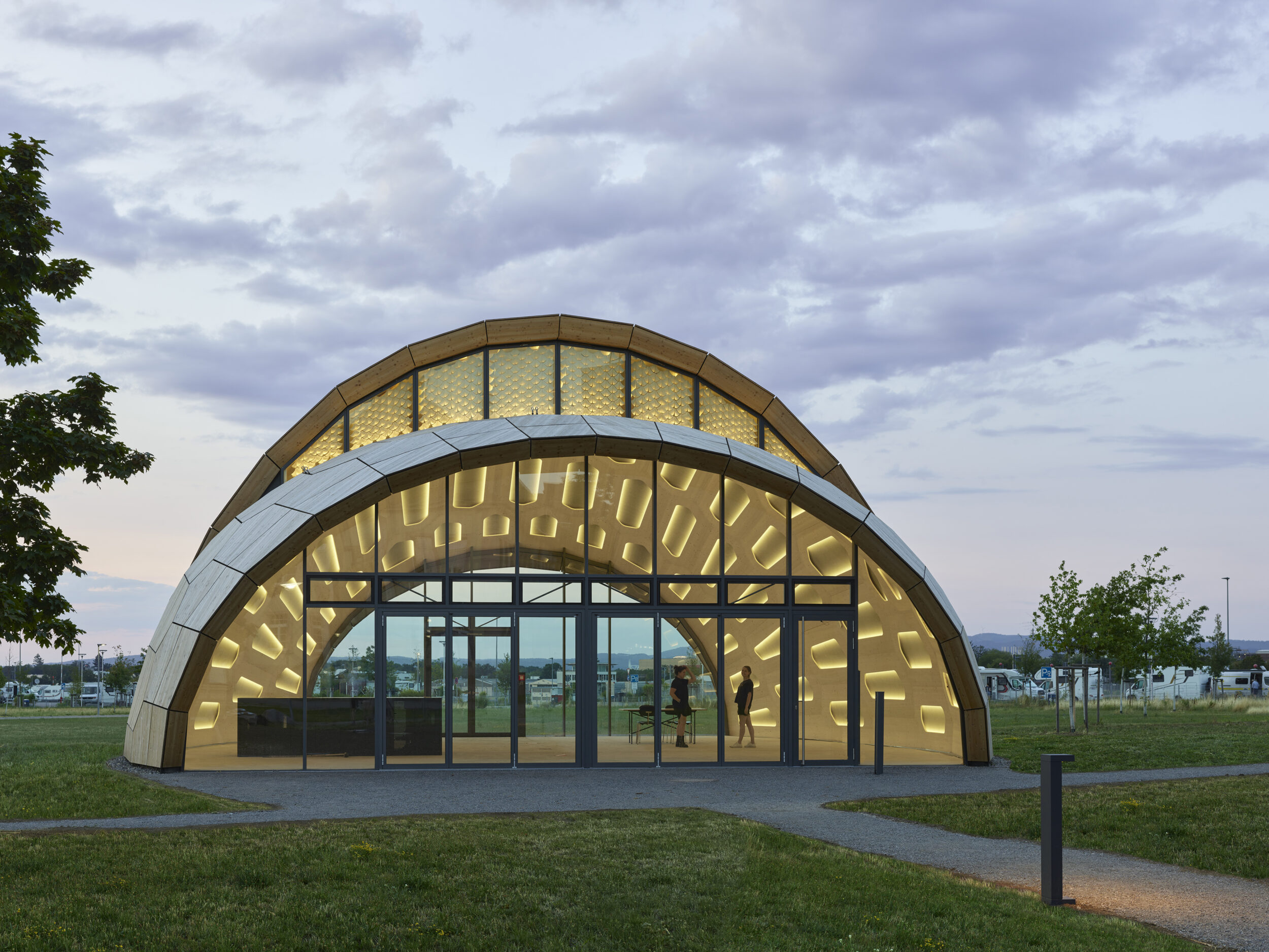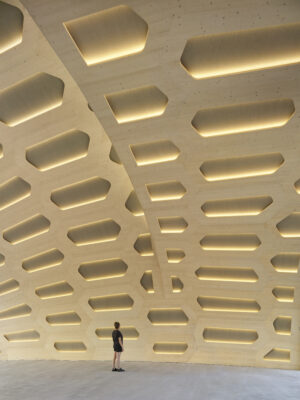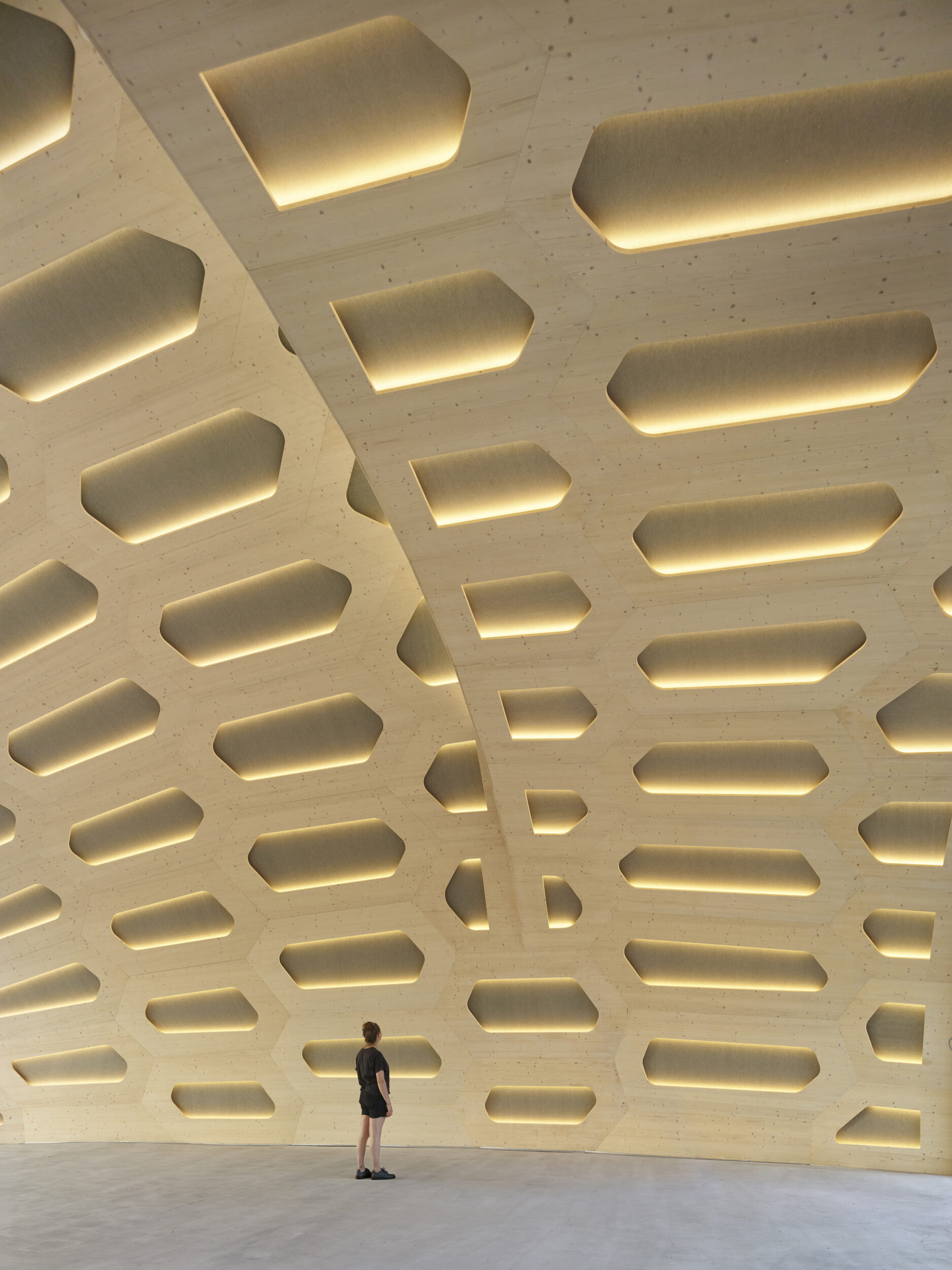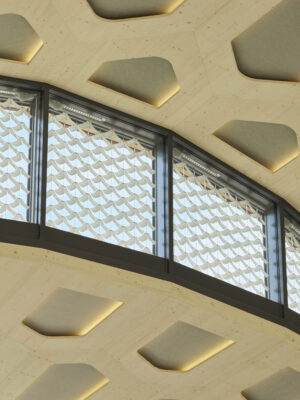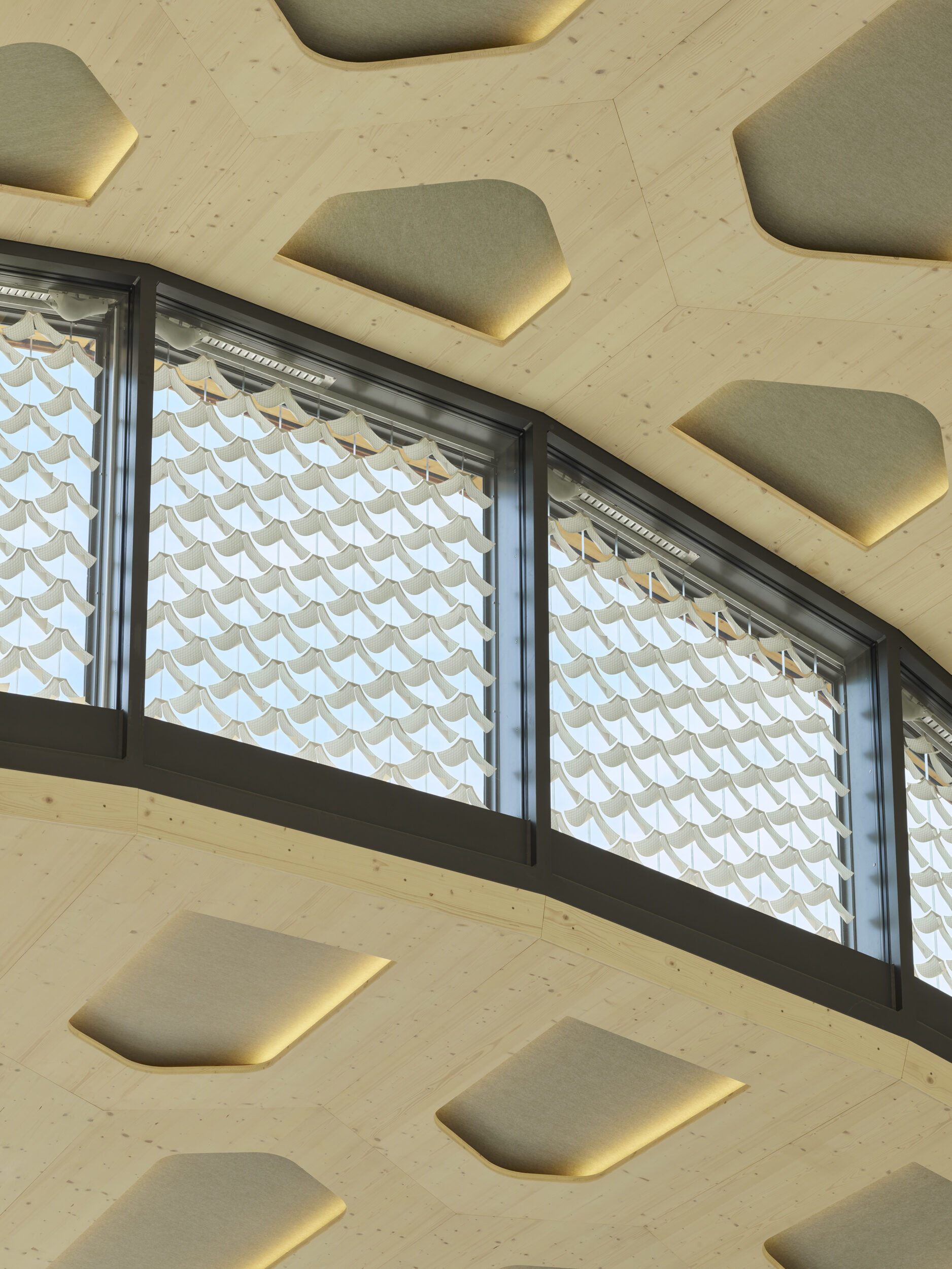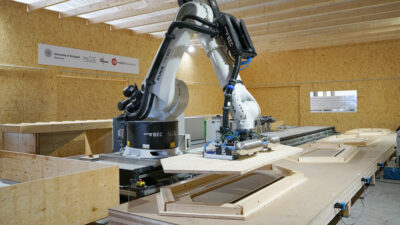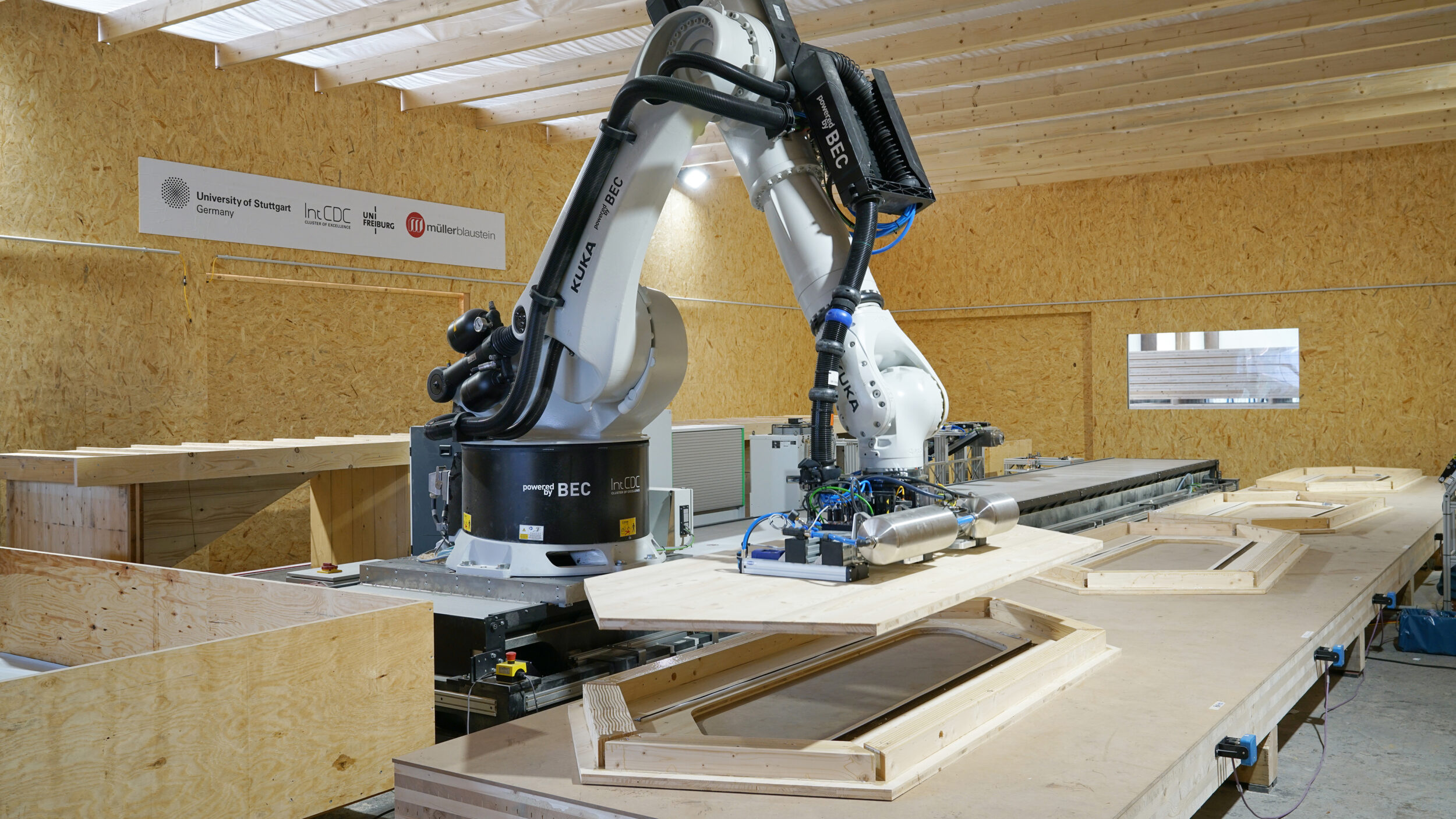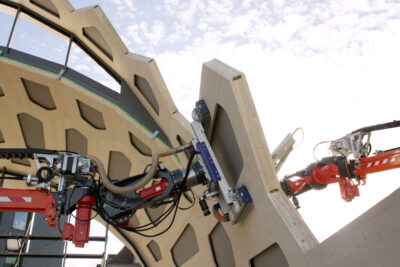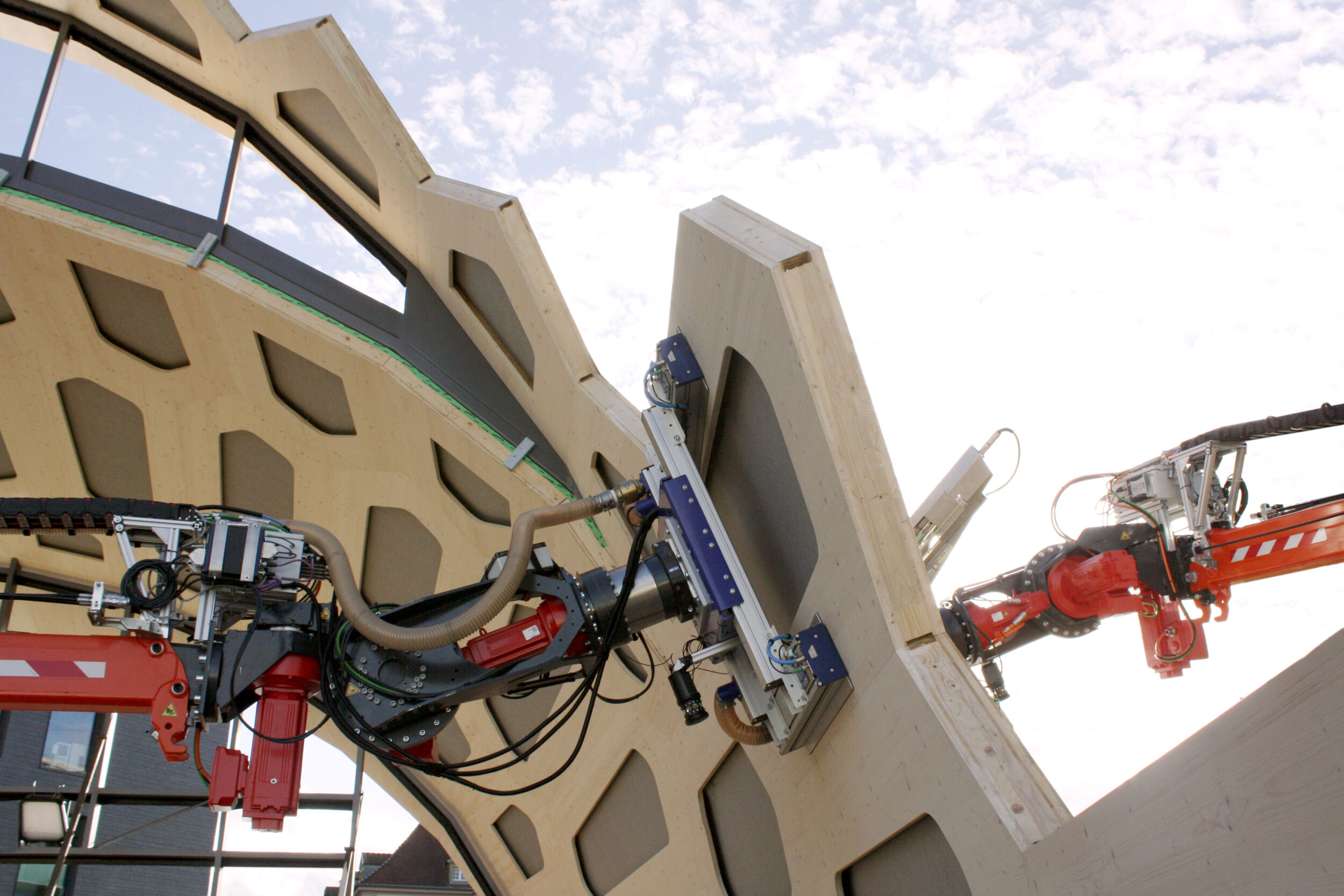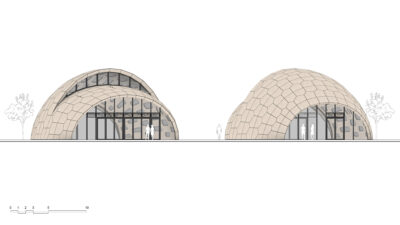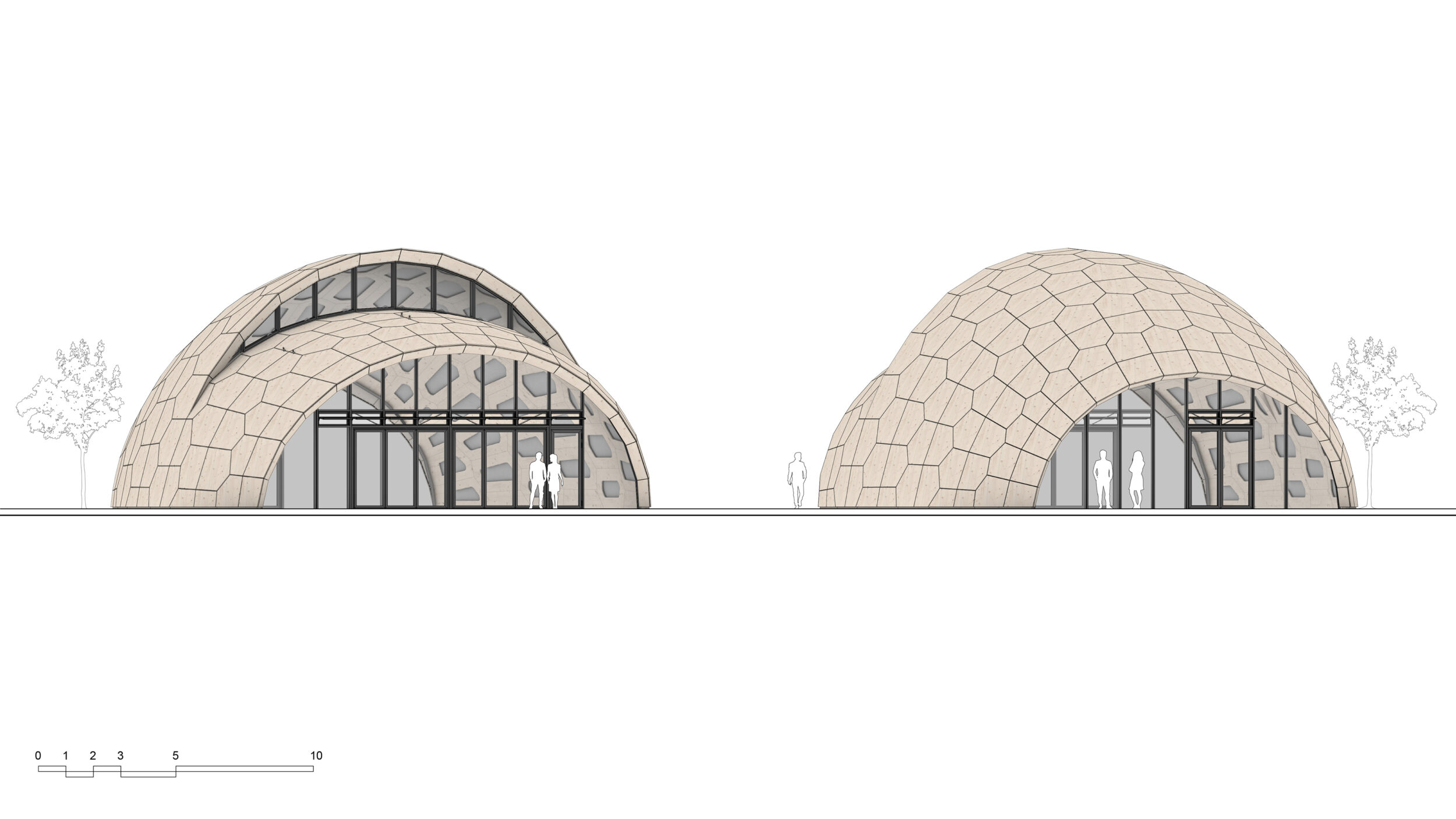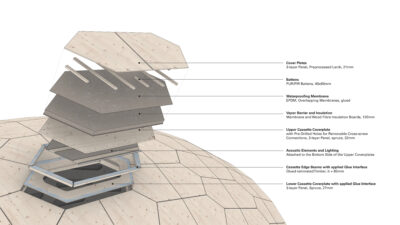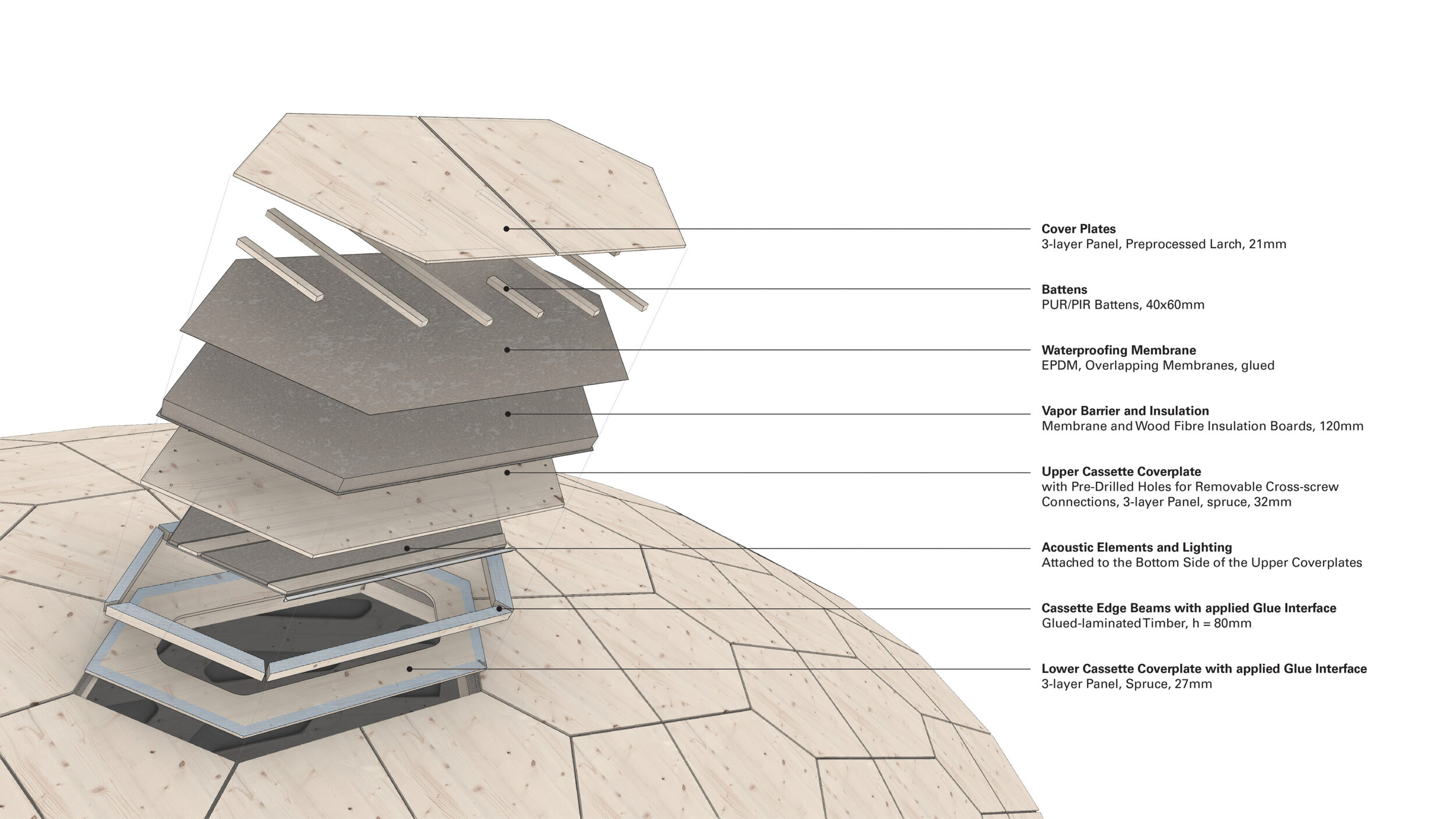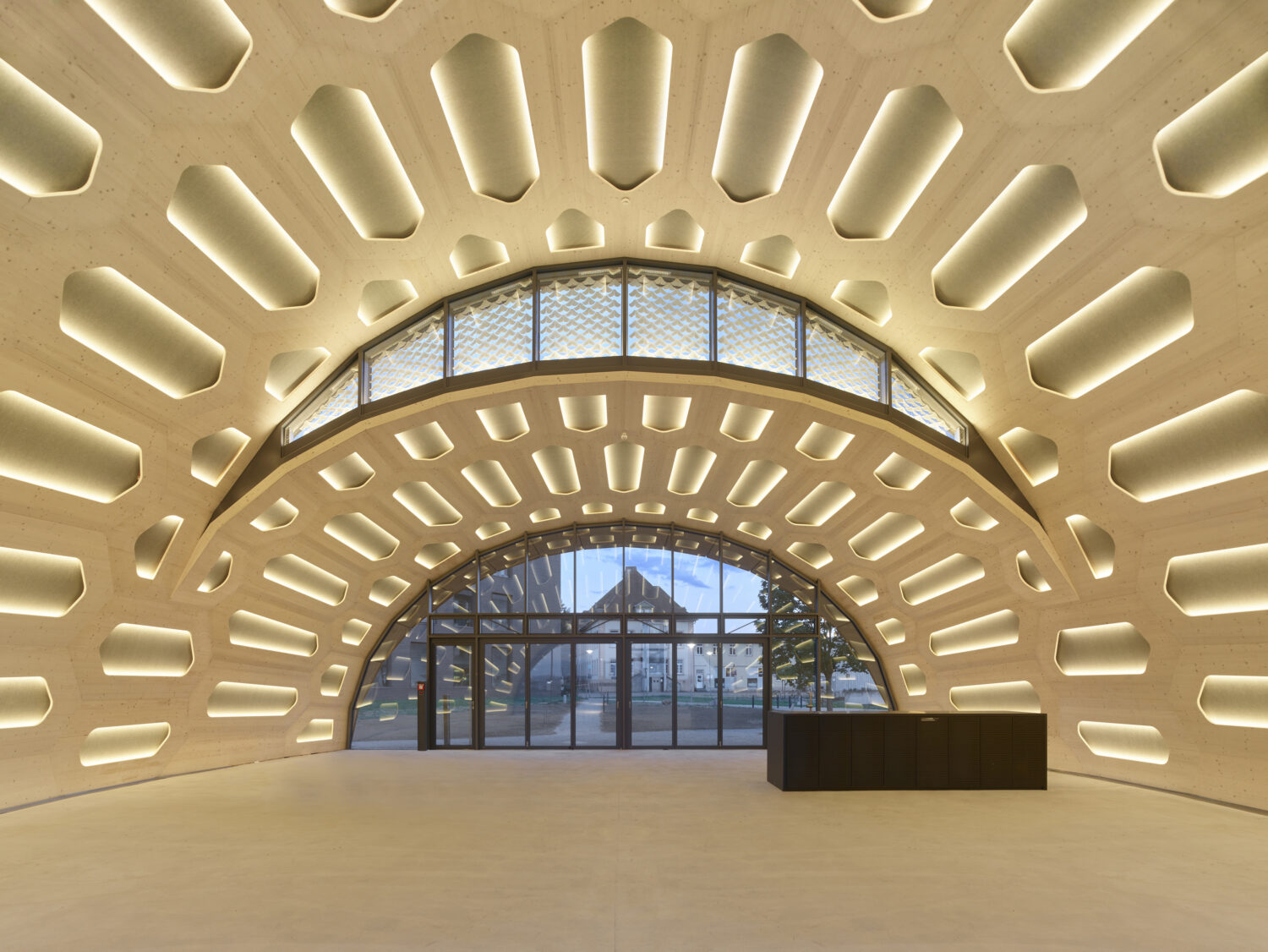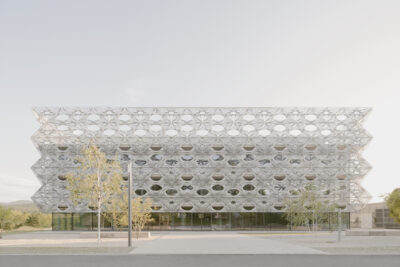
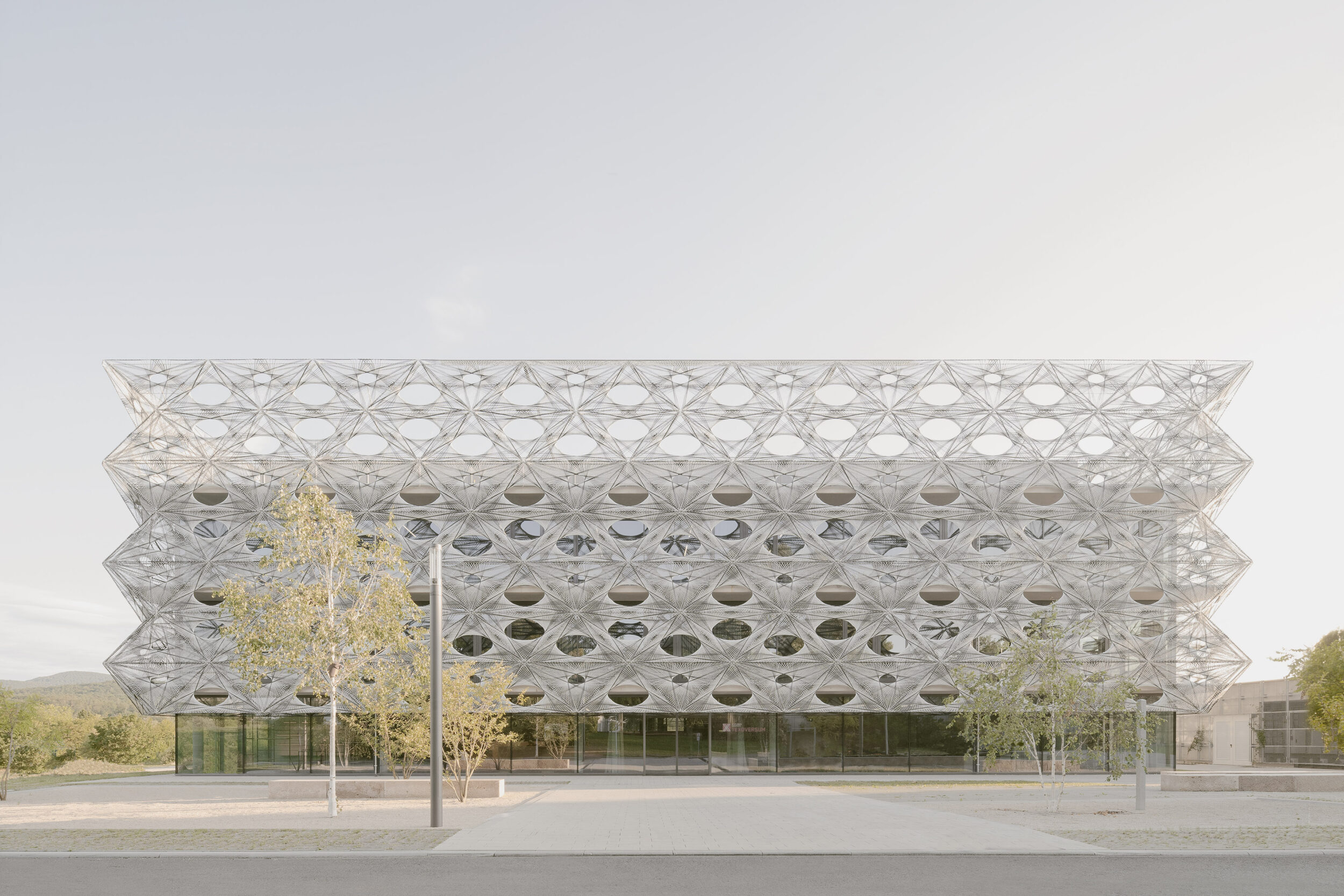
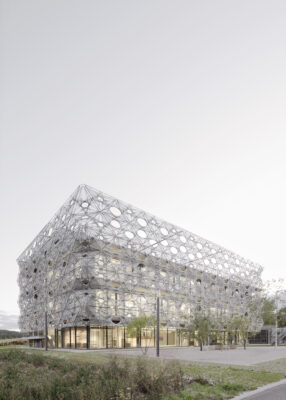
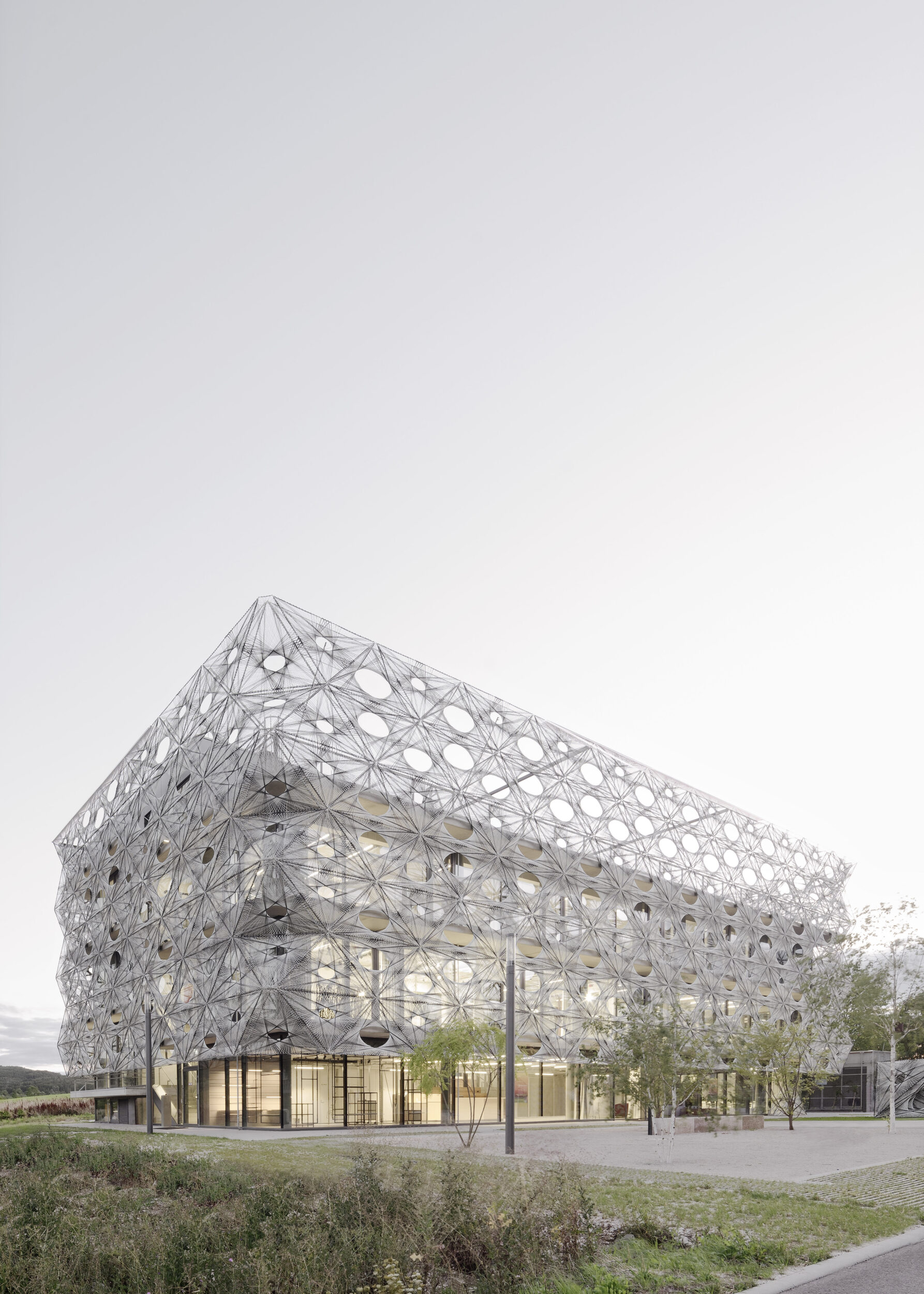
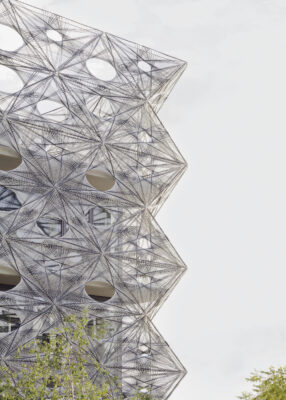
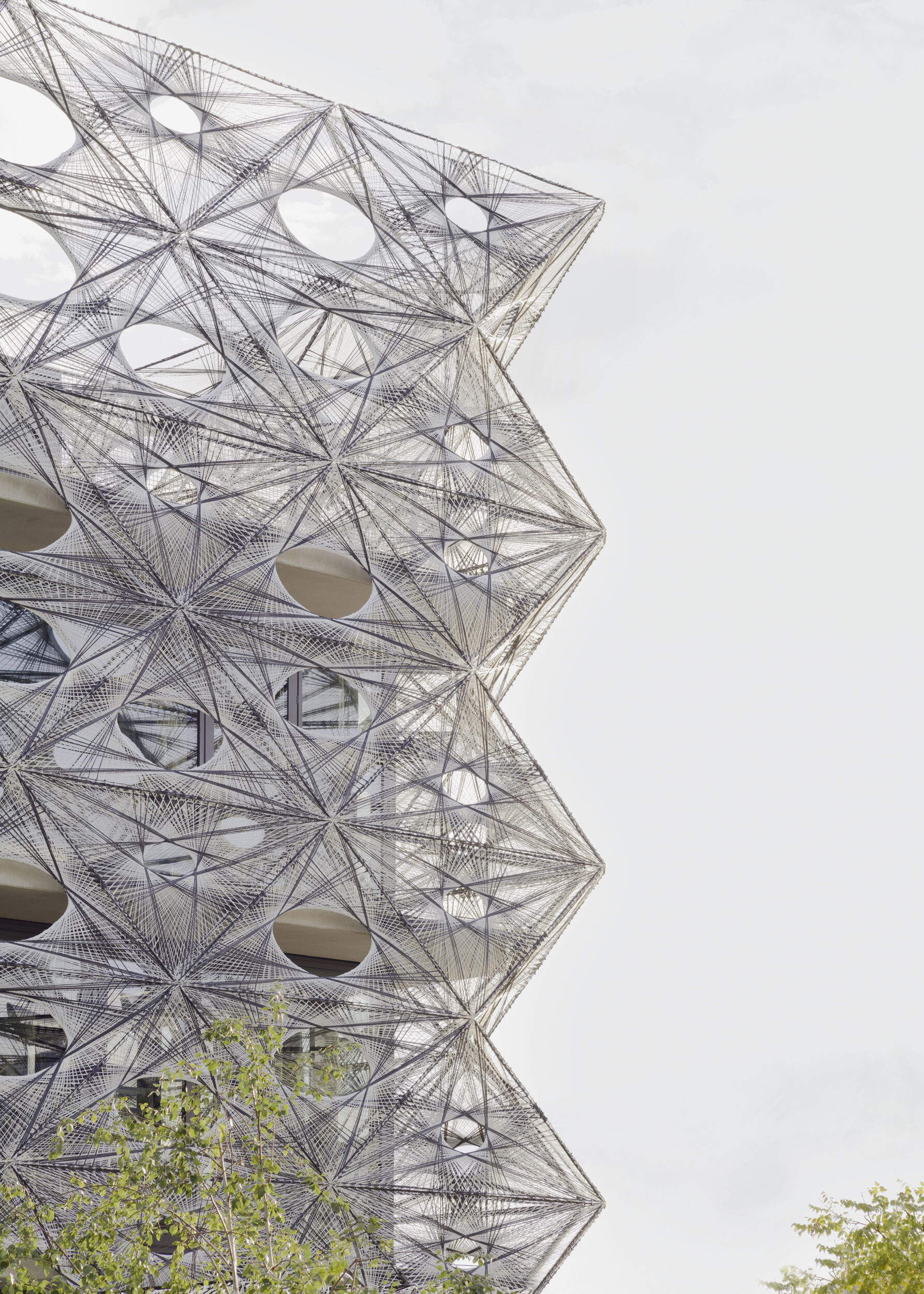
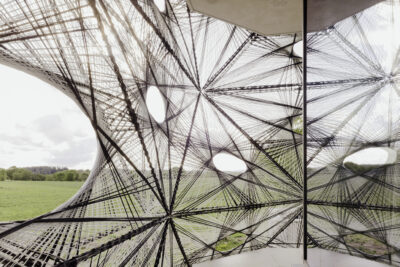
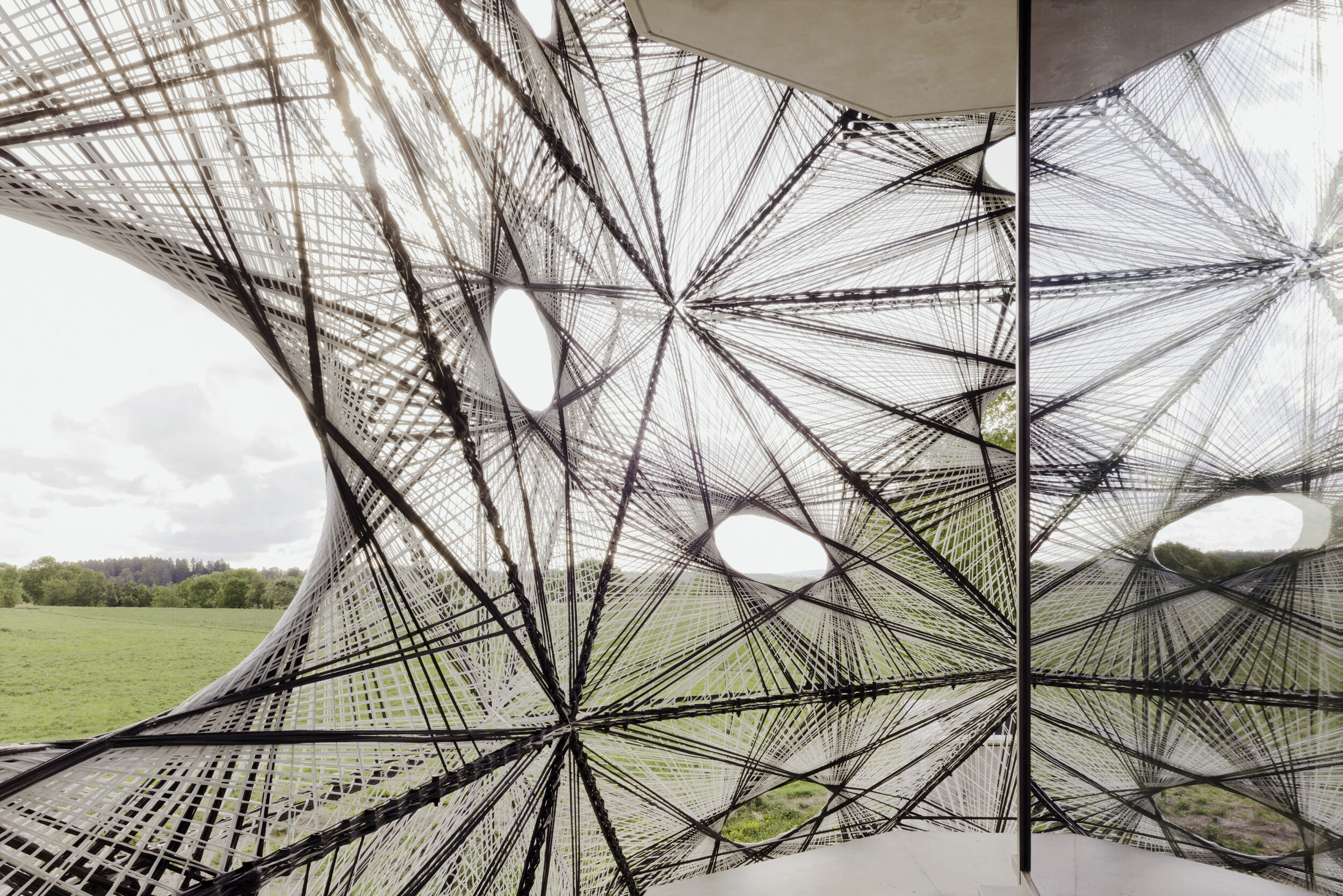
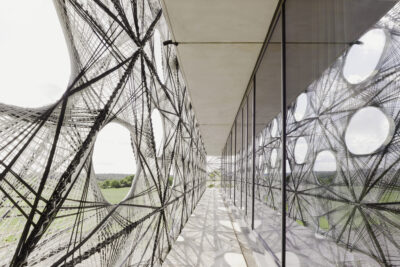
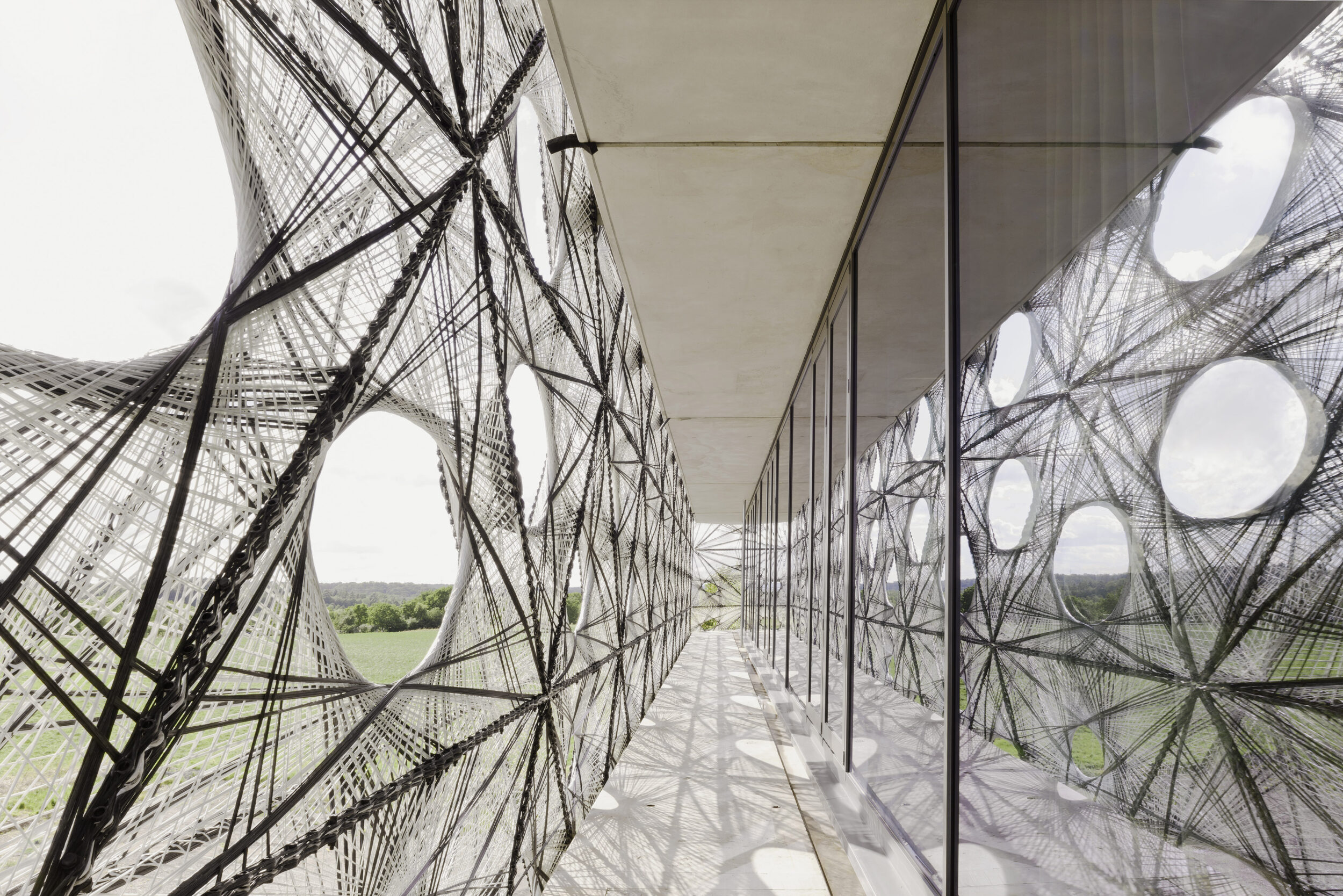
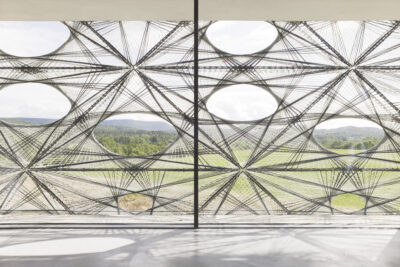
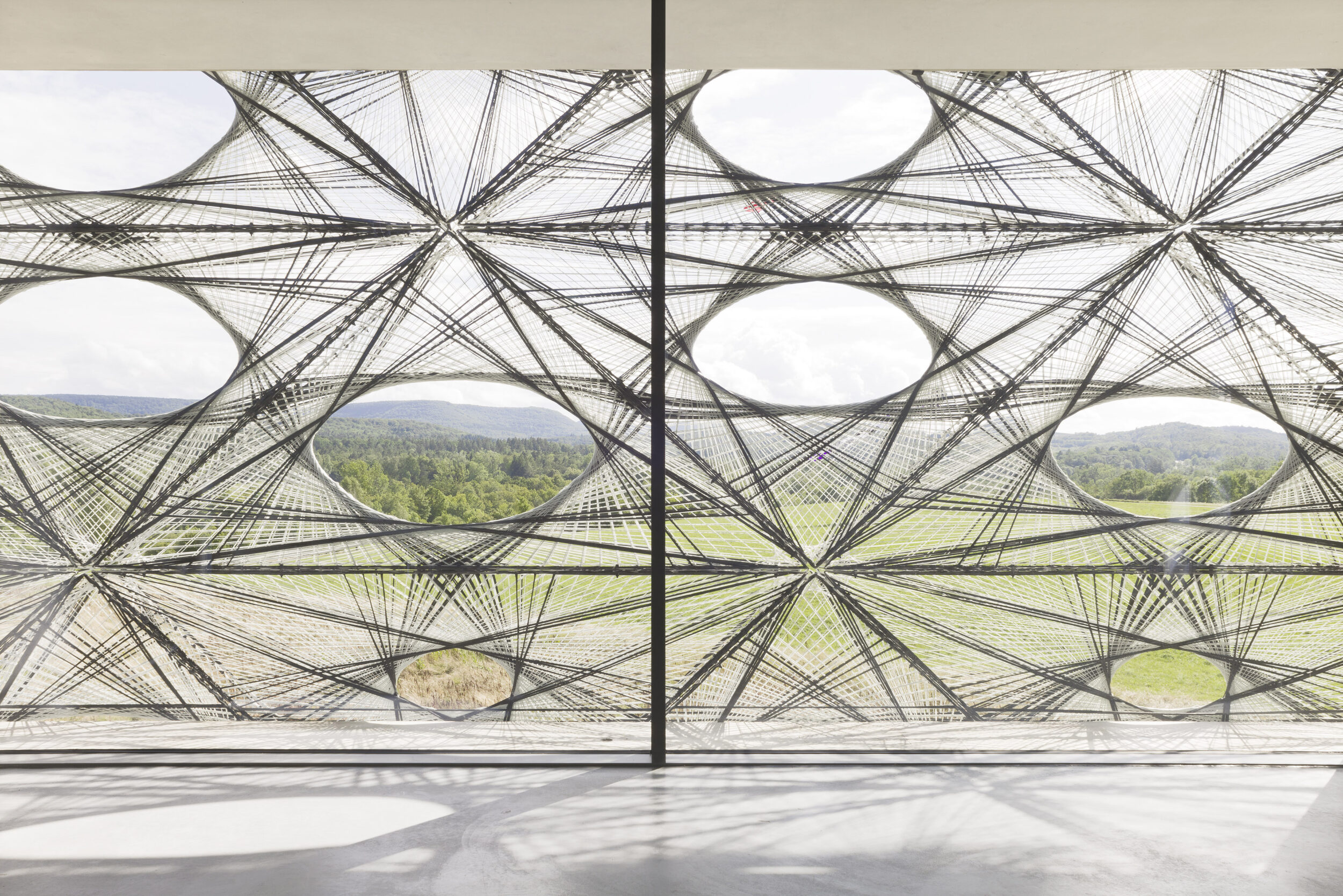
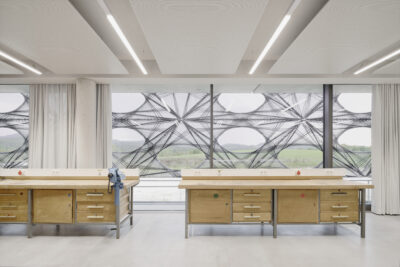
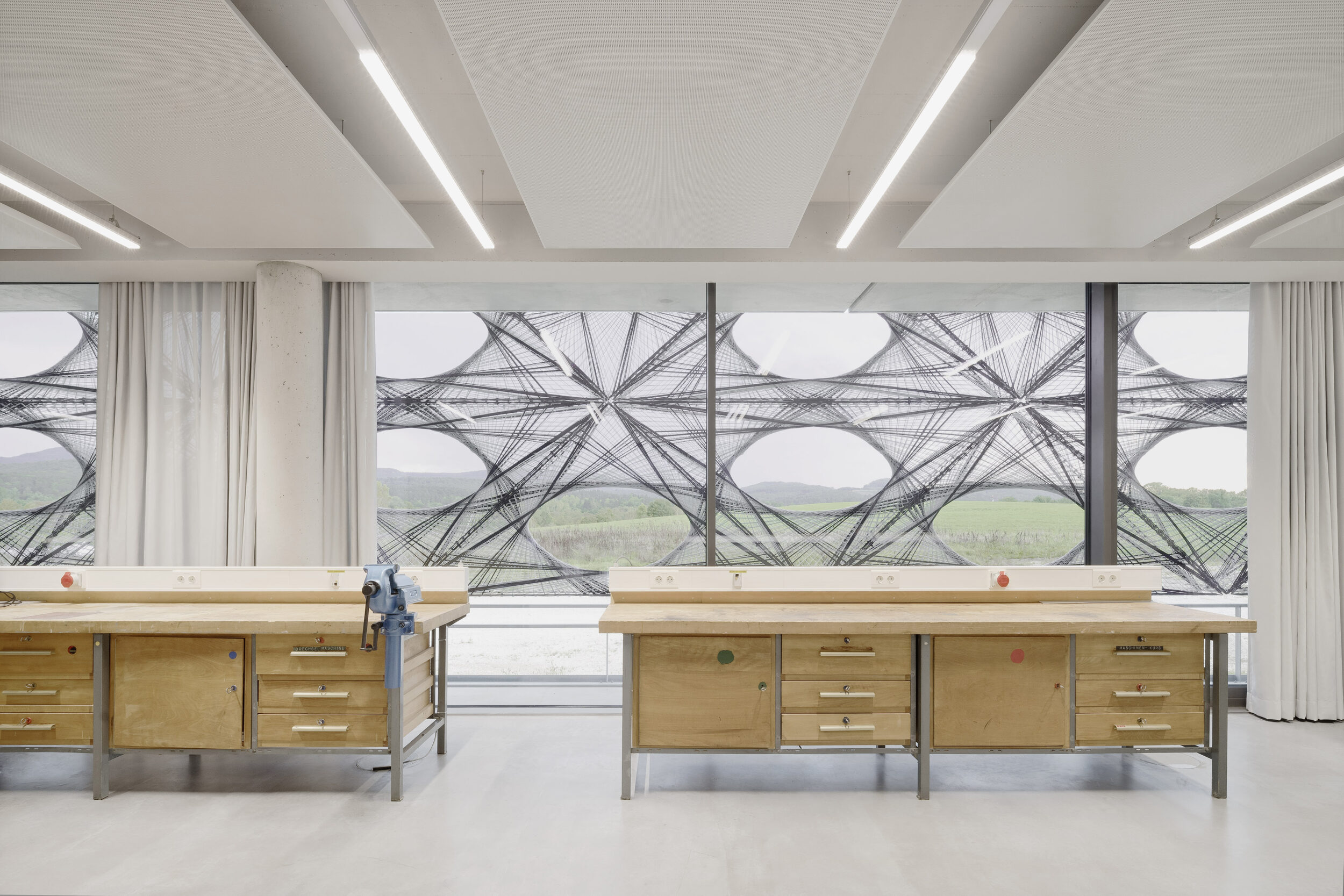
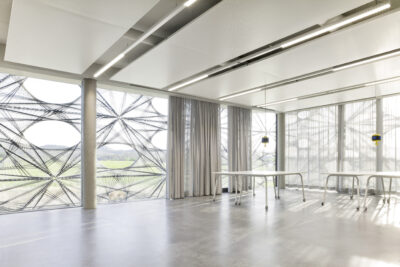
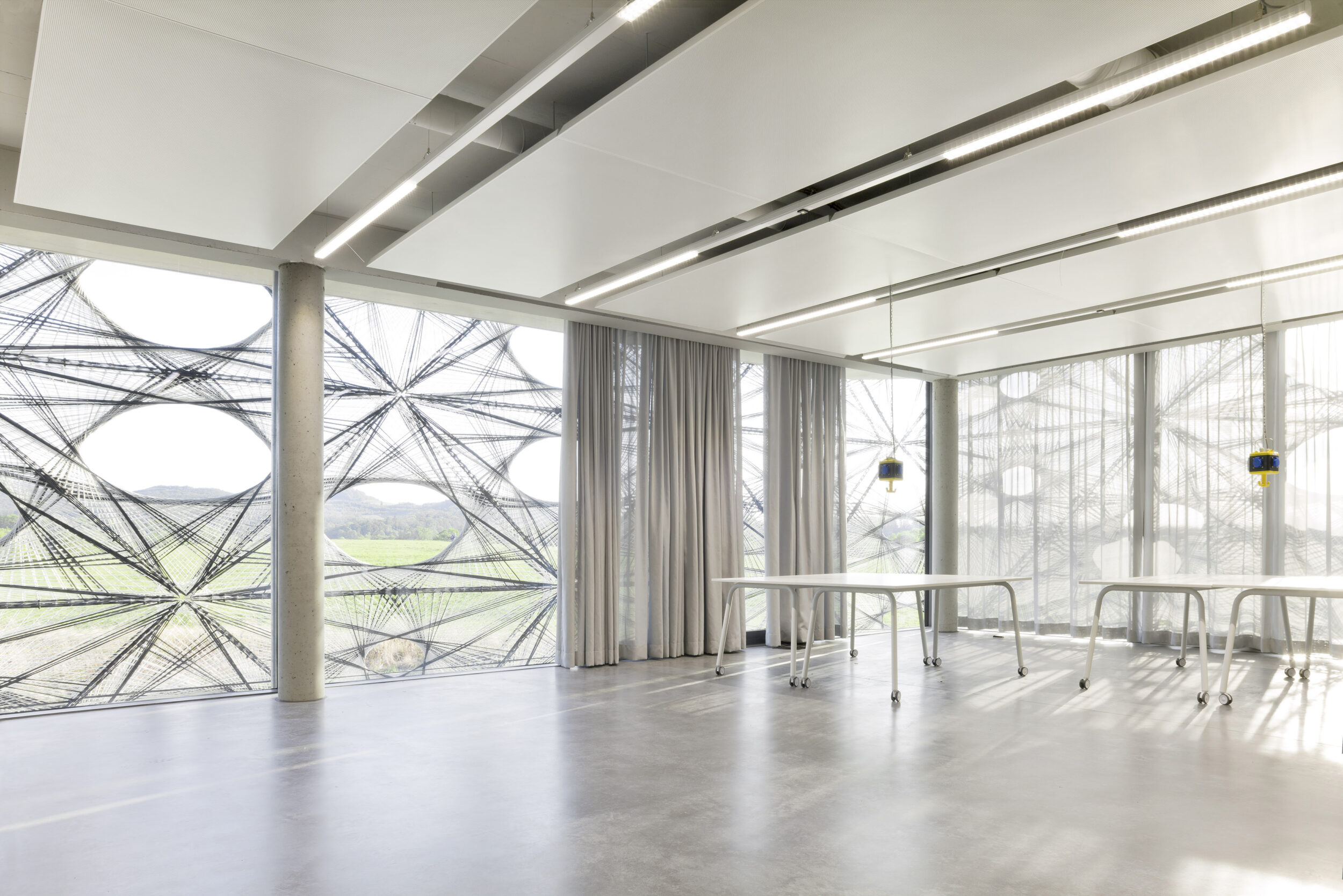
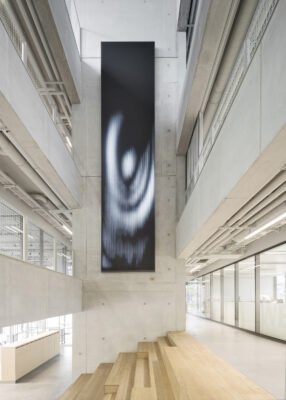
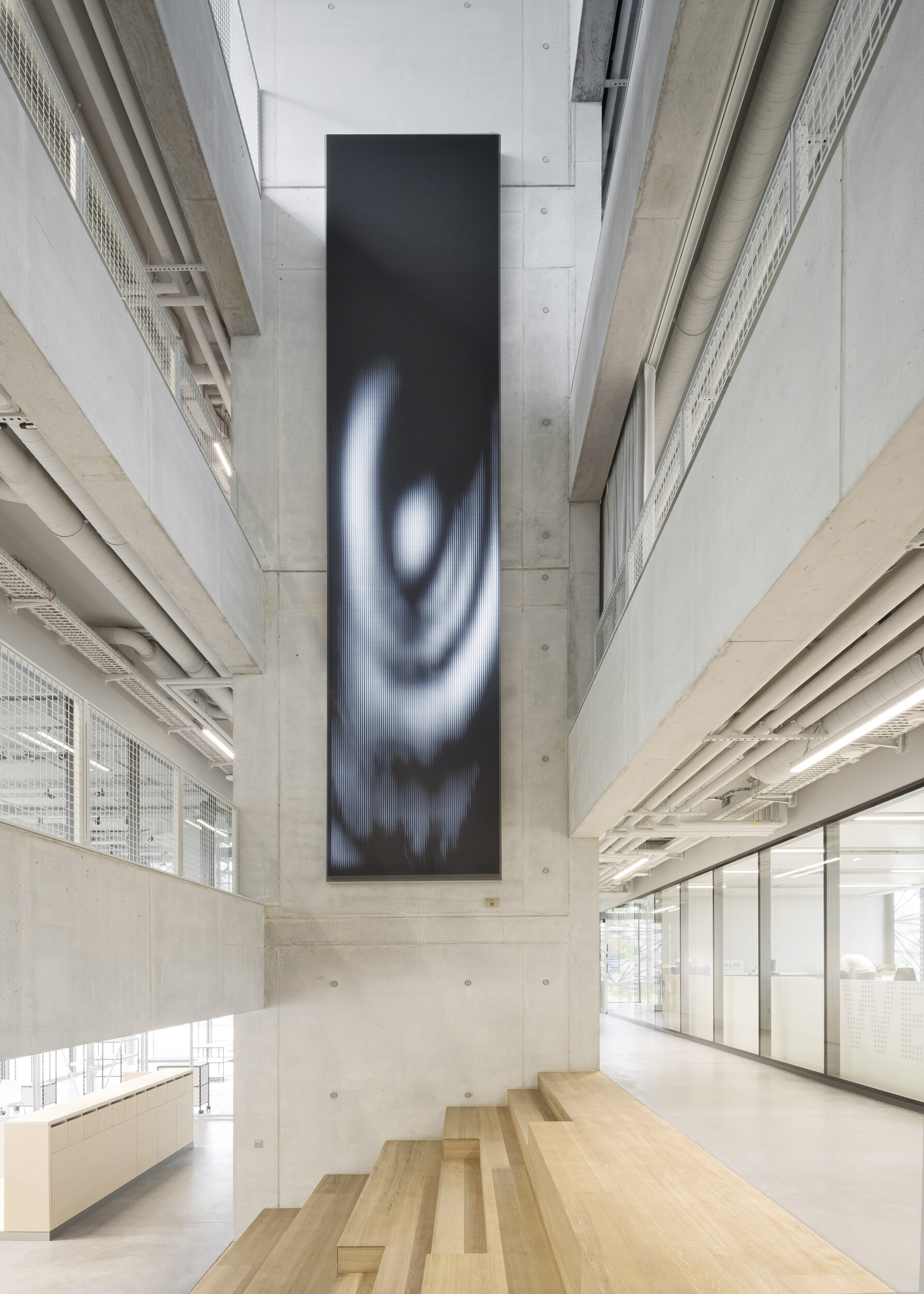
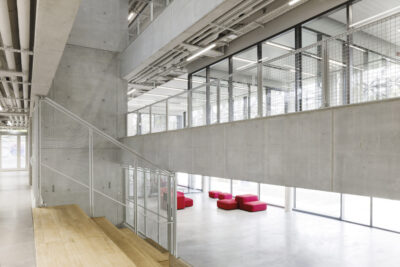
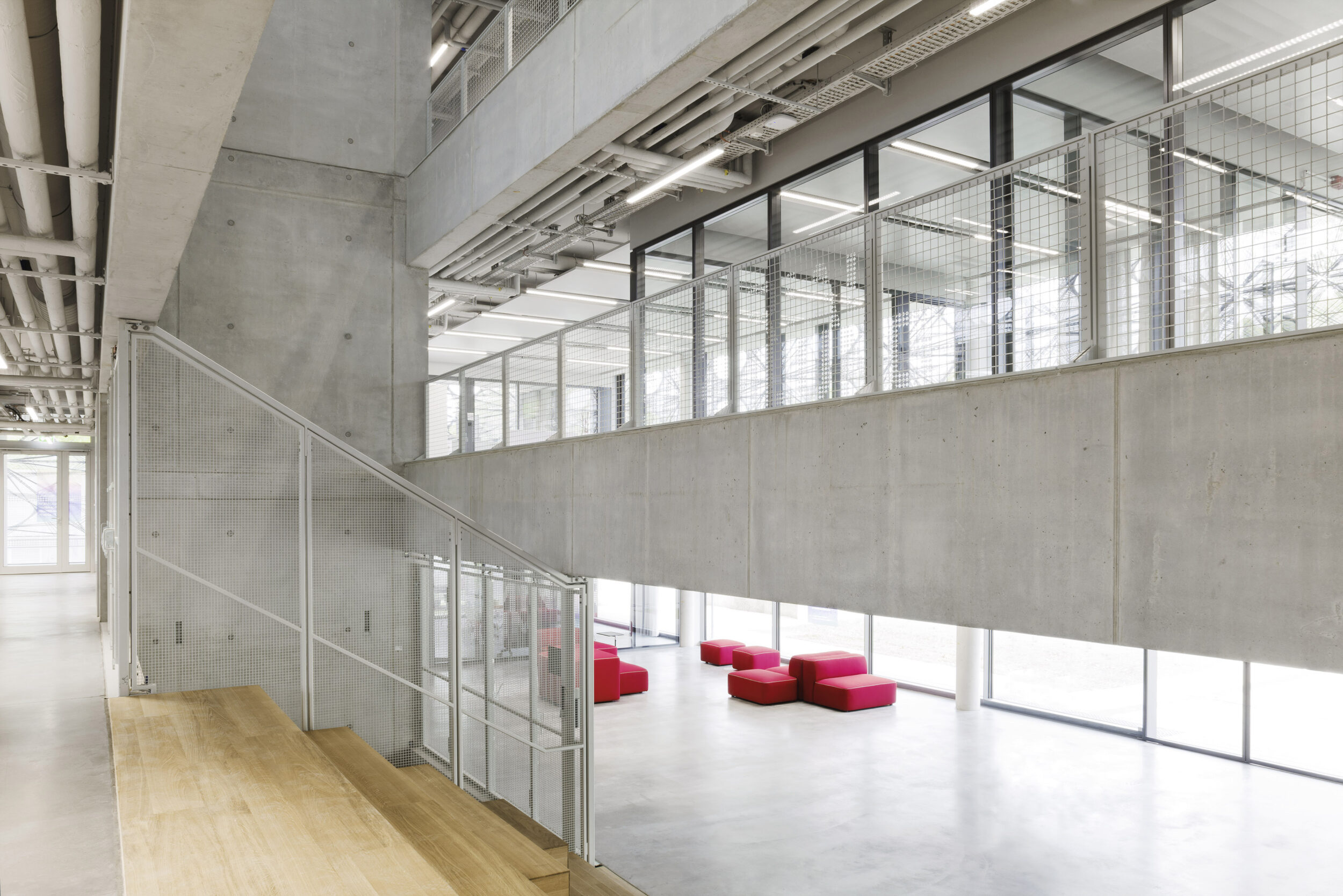
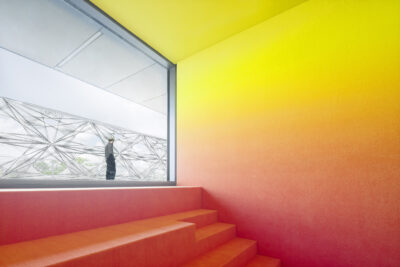
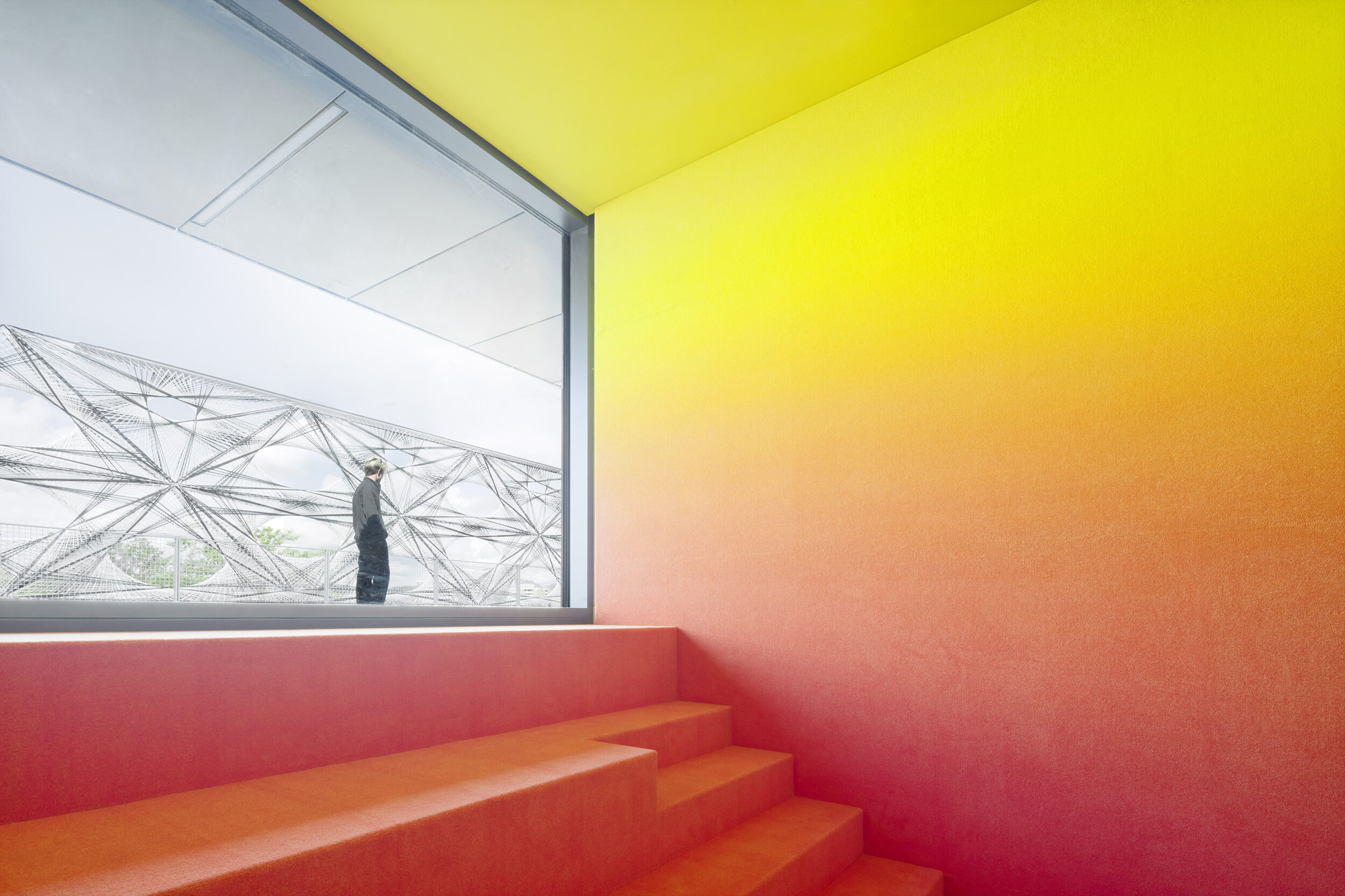
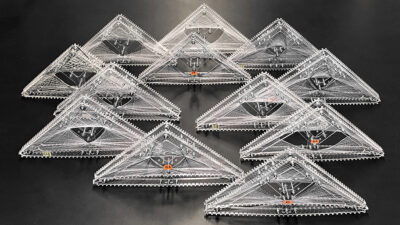
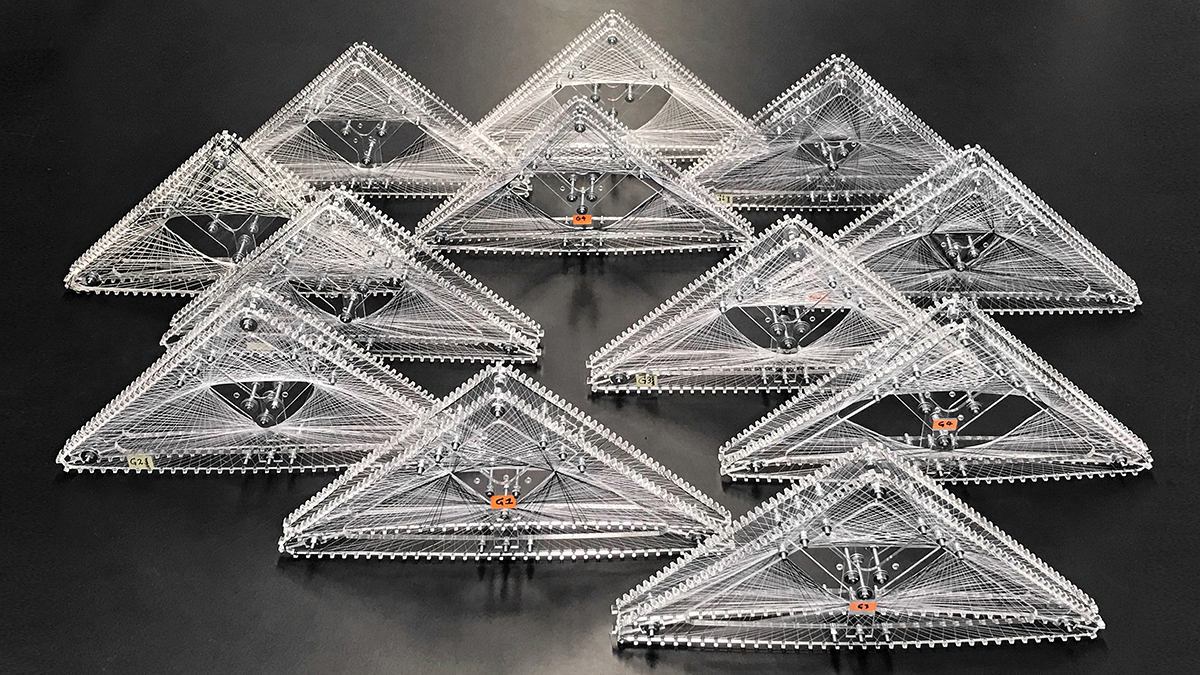
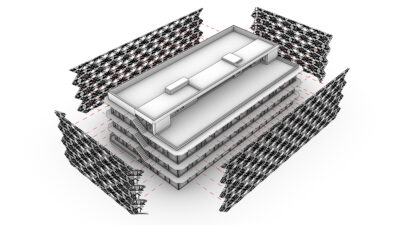
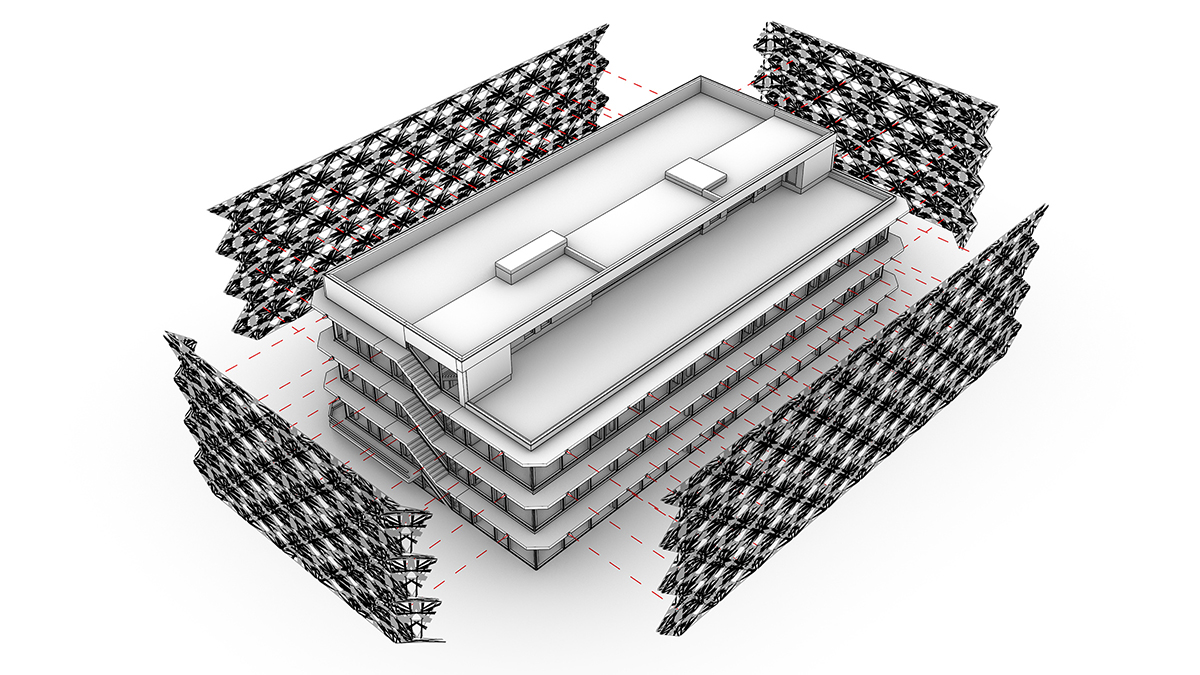
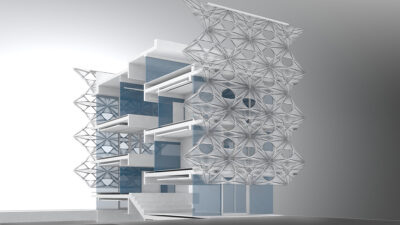
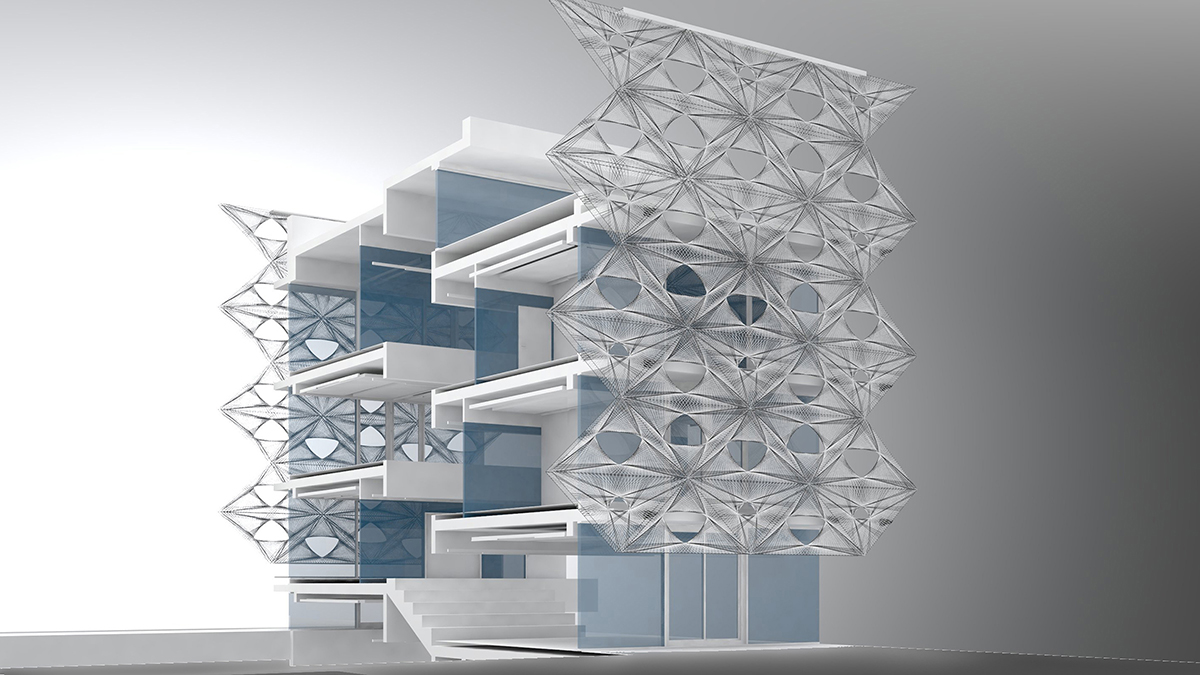
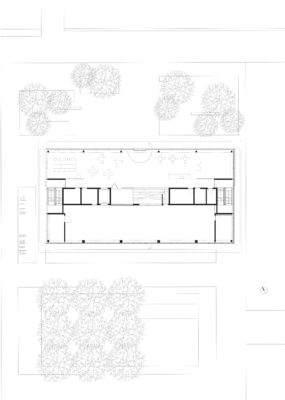
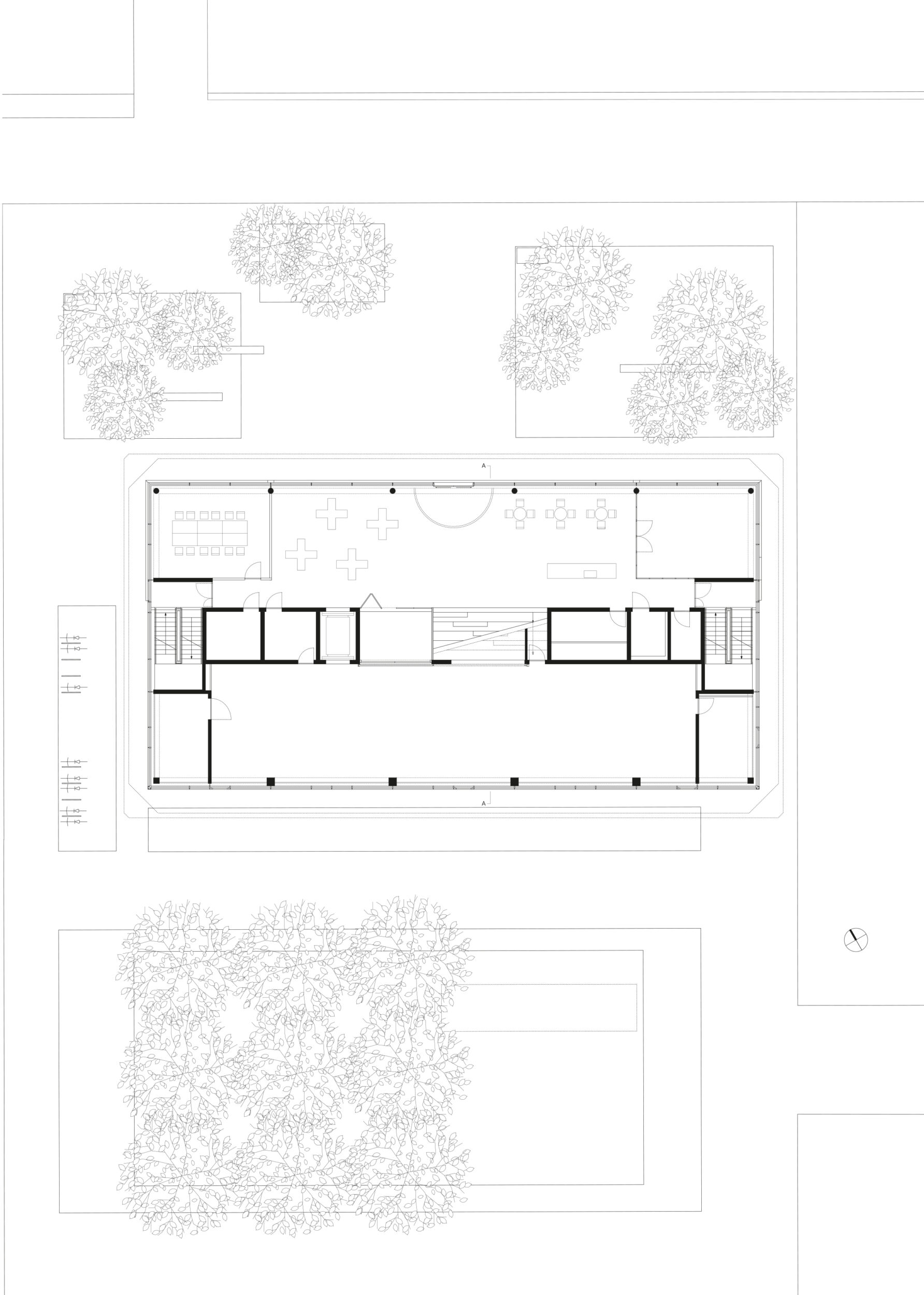
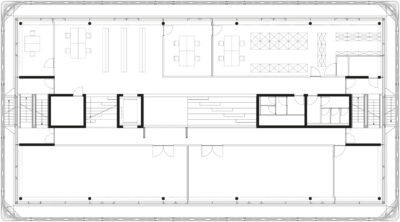
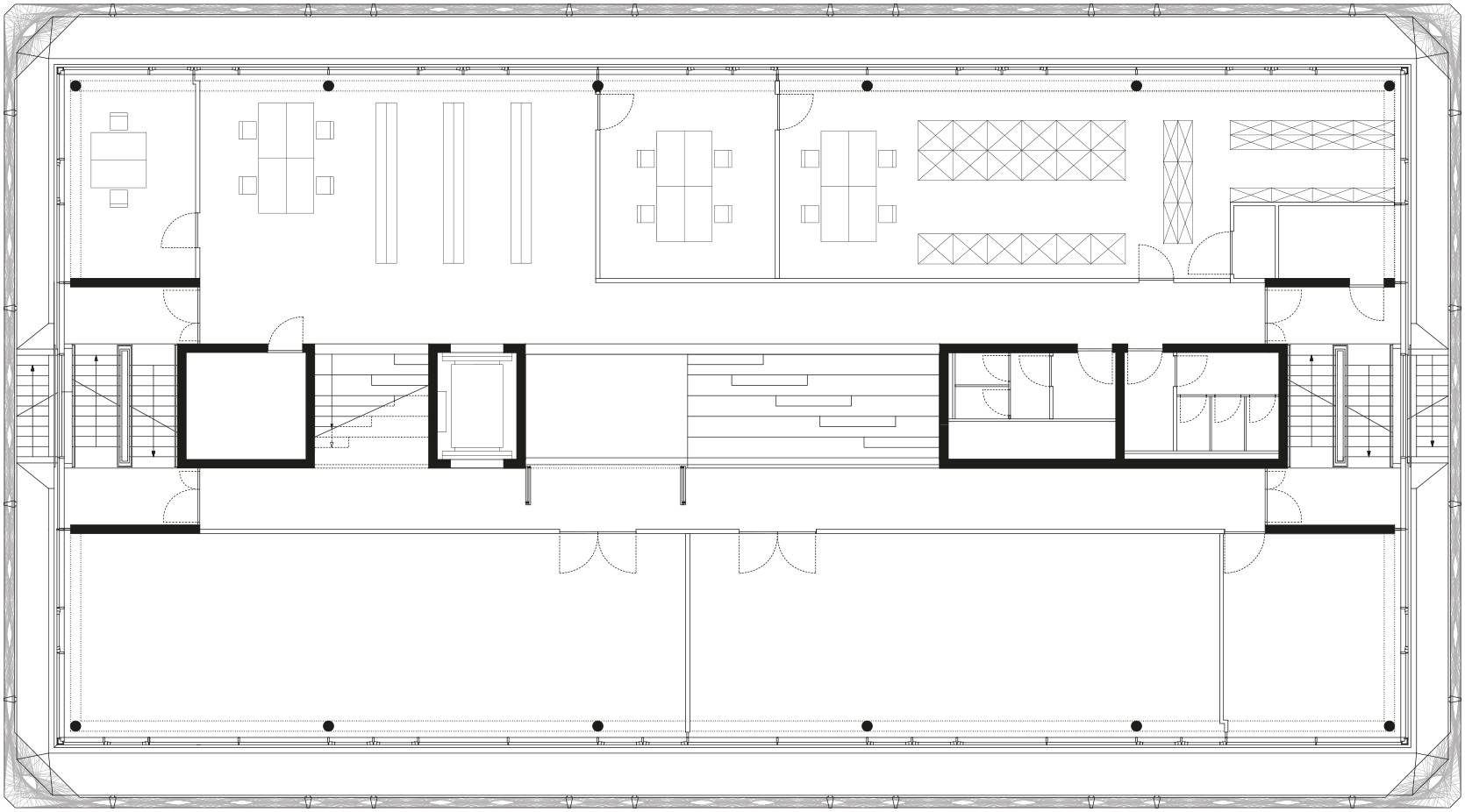
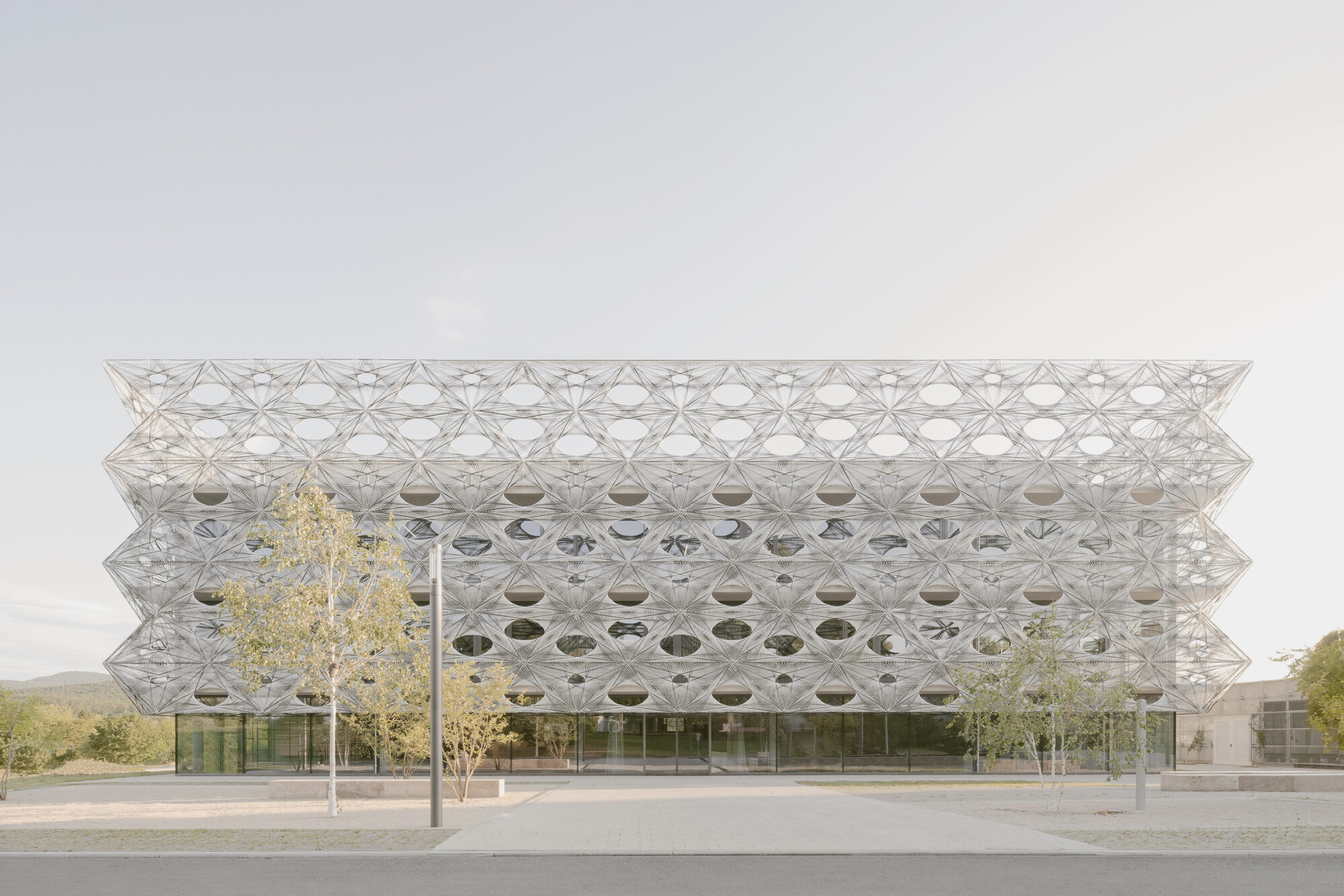

TEXOVERSUM
New Education and Innovation Centre
| Location | Reutlingen |
| Client | Südwesttextil e. V. |
| Floor Area | 4.200 m² |
| Completion | 2023 |
| Procurement | Competition, 1st Prize |
| Project Team | Allmann Wappner Architekten, Menges Scheffler Architekten and Jan Knippers Ingenieure |
| Phases | 1–9 |
Texoversum, an education, research and innovation centre for the cross-cutting technology in the field of textiles, is being established on the campus of Reutlingen University of Applied Sciences. As part of an ensemble, the new building will be developed and implemented as part of the master plan for the expansion of the Reutlingen campus. The Texoversum is a powerful and at the same time communicative element in the urban context of the academic institution. Allmann Sattler Wappner Architekten, Menges Scheffler Architekten and Jan Knippers Ingenieure are responsible for the design as a team. They were awarded first prize in the related design competition and subsequently commissioned with the realisation. The Texoversum comprises almost 3,000 square metres of space for different user groups. It includes workshops, laboratories, the internationally renowned collection of historical textile and fabric samples, multifunctional areas for research and development and various classrooms.
The architectural concept is based on a multifaceted examination of the topic of textile architecture. The design theme is reflected both structurally in the internal interweaving of functions and in the building envelope that creates its own identity. The unique façade made of carbon and glass fibres, the first of its kind to be implemented in this way, represents the innovative power and future viability of fibre-based materials and textile techniques. In a robotic winding process developed at the institutes of Achim Menges (ICD) and Jan Knippers (ITKE) at the University of Stuttgart, each individual facade element can be individually tuned to its functional requirements. Starting from three basic modules, the elements transform themselves according to their orientation toward the sun and form a unique, multi-layered appearance. The elements are completely self-supporting and do not require a supporting structure. Their staggered arrangement allows free views. In addition to the functional requirements as external shading devices and guard railing, the façade meets aesthetic and representative demands and creates a distinctive building that expresses textiles as a driving force for technology.
The design theme of permeability and networking is continued in the conception of the building structure. In its inner structure, Texoversum is designed as an open, transparent building with split levels. The offset mezzanine levels, which are also visually interwoven via the atrium, connect the different areas of use with each other and form a spatial continuum that ends in a generous roof terrace. Visually, each level boasts an unmistakable industrial character with hard-wearing screed and polished concrete surfaces as well as a ceiling with exposed conduits. The tiered seating platforms, offering a contrast as soft-furnished spaces, are designed to connect the levels one with another. Separate areas can be partitioned off where needed using fabric dividers. This open-plan design creates a collaborative workspace for the respective user groups, fostering open communication and offering various forums for an animated exchange of ideas.
